Hakodate is an important city in Japan’s history. It was one of the first ports that opened for foreign trade in 1854, which ended Japan’s 200-year-long isolation from the rest of the world. It was also the site of the last civil war that marks the end of the Tokugawa Shogunate reign in Japan.
Nowadays, Hakodate is famous for its fresh seafood and beautiful night view. Many visitors flock to Hakodate to enjoy the day’s freshest catch while relaxing in Hokkaido.
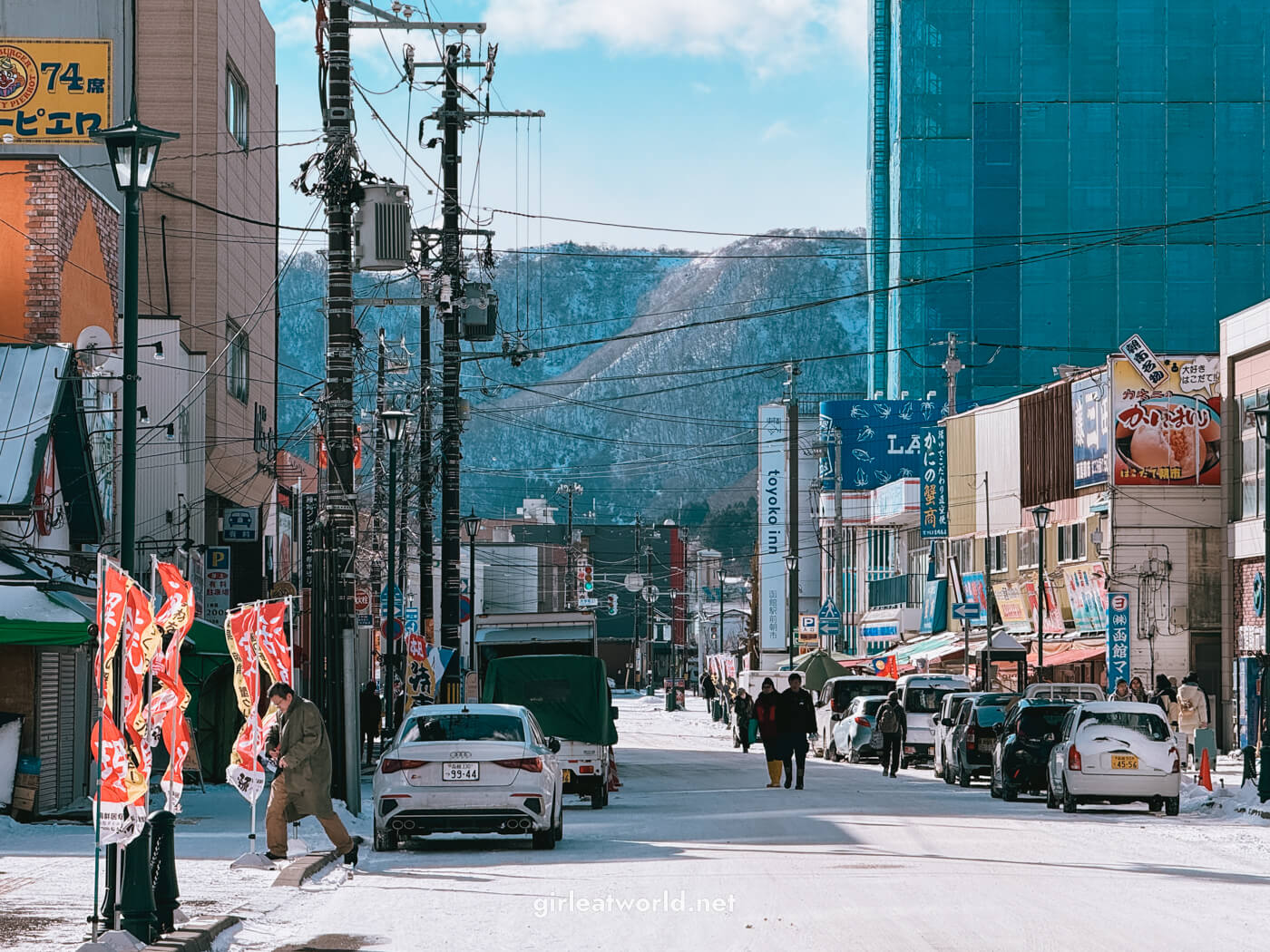
How to get to Hakodate
Hakodate remains one of the major cities in Hokkaido. Because of that, it can be easily reached from other parts of Japan. Here are a few ways you can get here:
1. Hokuto Limited Express Train from Sapporo
If you’re coming from Sapporo, there is a direct limited express train that takes you to Hakodate Station from Sapporo station.
🚝 Purchase the train ticket online: Book your train ticket with Klook for easy redemption at the station! Simply head to any vending machine in front of the station gate and follow Klook’s instructions.
The train journey from Sapporo <> Hakodate took about 3 hours and 45 minutes. This train line is called Hokuto and costs 8,910 yen one way per adult for the unreserved seat. You can reserve a seat for an additional 500 yen. Children under 6 can travel for free, but they will not have any seats and will need to sit on your lap.
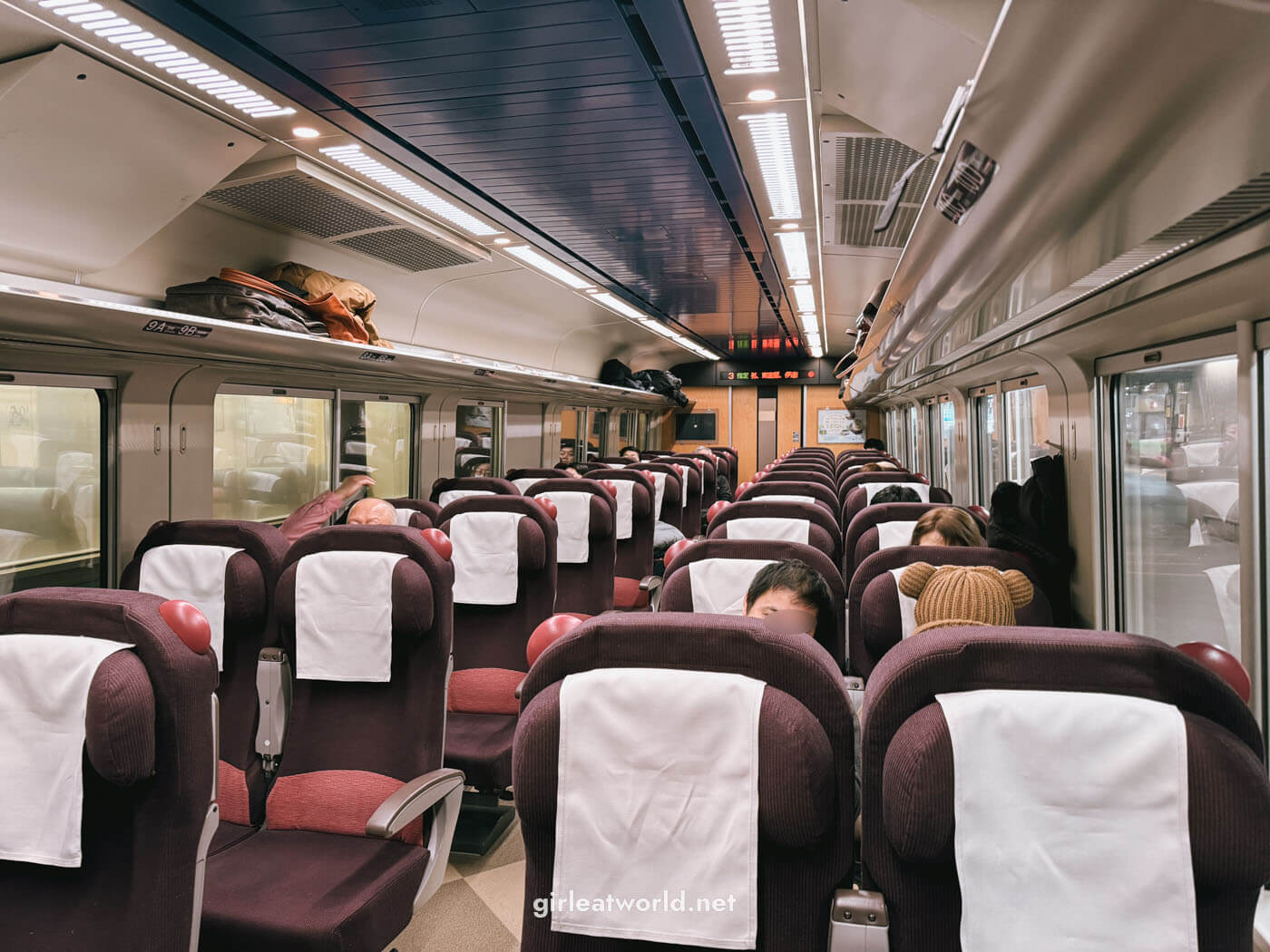
This was the option we went with, as we were spending 10 days in Hokkaido and were coming from Sapporo. Hakodate was at the tail end of our itinerary.
Just to set expectations, if you’ve taken a Shinkansen (bullet train) in Japan, don’t expect this express train to be at the same level as Shinkansen. It is much slower (of course), and does not have any amenities. It is also much smaller than Shinkansen train. But at the end of the day, it still gets the job done!
2. Fly to Hakodate Airport
There is a small airport in Hakodate, serving mostly domestic flights by ANA and JAL going to Tokyo and some international flights from Taiwan. Hakodate Airport is not too far from the central Hakodate area, where you would want to be as a tourist. It is only about 20 minutes drive away.
If you decide to fly in or out of Hakodate Airport, here are a few ways to get to and from the airport to the central area:
- 4-seater Taxi – Around 4,500 yen one way from JR Hakodate Station area to the airport.
- Airport Express Shuttle Bus – 500 yen per adult. This is a convenient way to get to the airport. But please take note, the bus is popular and you might need to line up ahead of time. We lined up at 15:05 for the 15:20 bus and just barely made the cut. We were the last passengers allowed to board the first bus. However, it does seem like they have a second overflow bus coming shortly after. Check the shuttle schedule here.
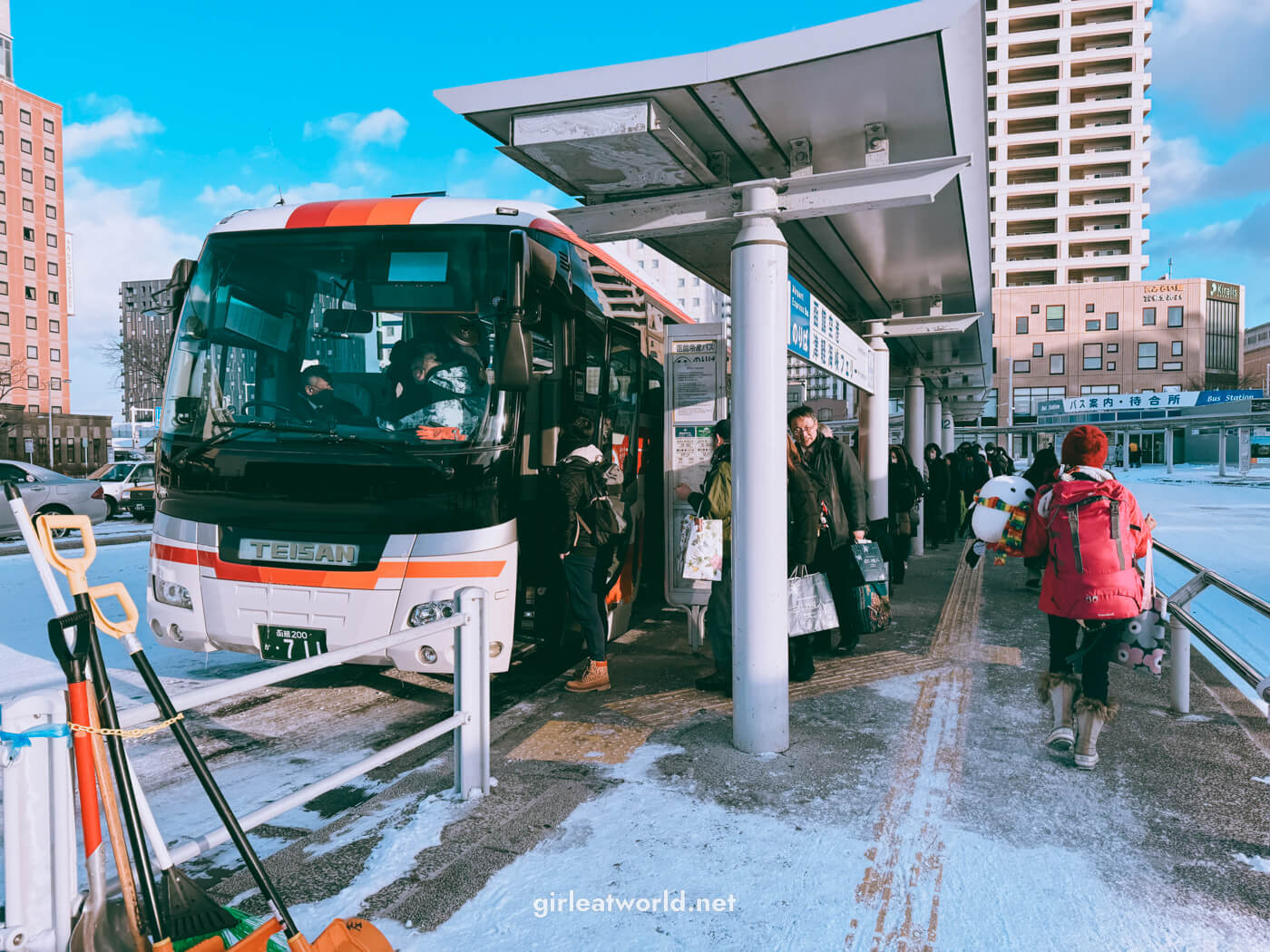
We flew out of Hakodate Airport at the end of our journey back to Tokyo with JAL. The flight was very easy, it took only 1 hour and 10 minutes.
How long should I stay in Hakodate?
Hakodate is quite a compact city, and all of the things I mentioned below can easily be explored in 1.5 to 2 days. I do think it still warrants an overnight stay in Hakodate, but I would not stay more than 2 days.
Where to Stay in Hakodate
You’d want to stay in the Port Hakodate Bay area near Hakodate Station. We stayed at Hakodate Kokusai Hotel. I loved our stay at the hotel, so I am recommending everyone to stay here too!
I booked my stay using Trip.com after comparing prices across different booking platforms. I would suggest you do the same! Here are the links to book Hakodate Kokusai across different platforms:
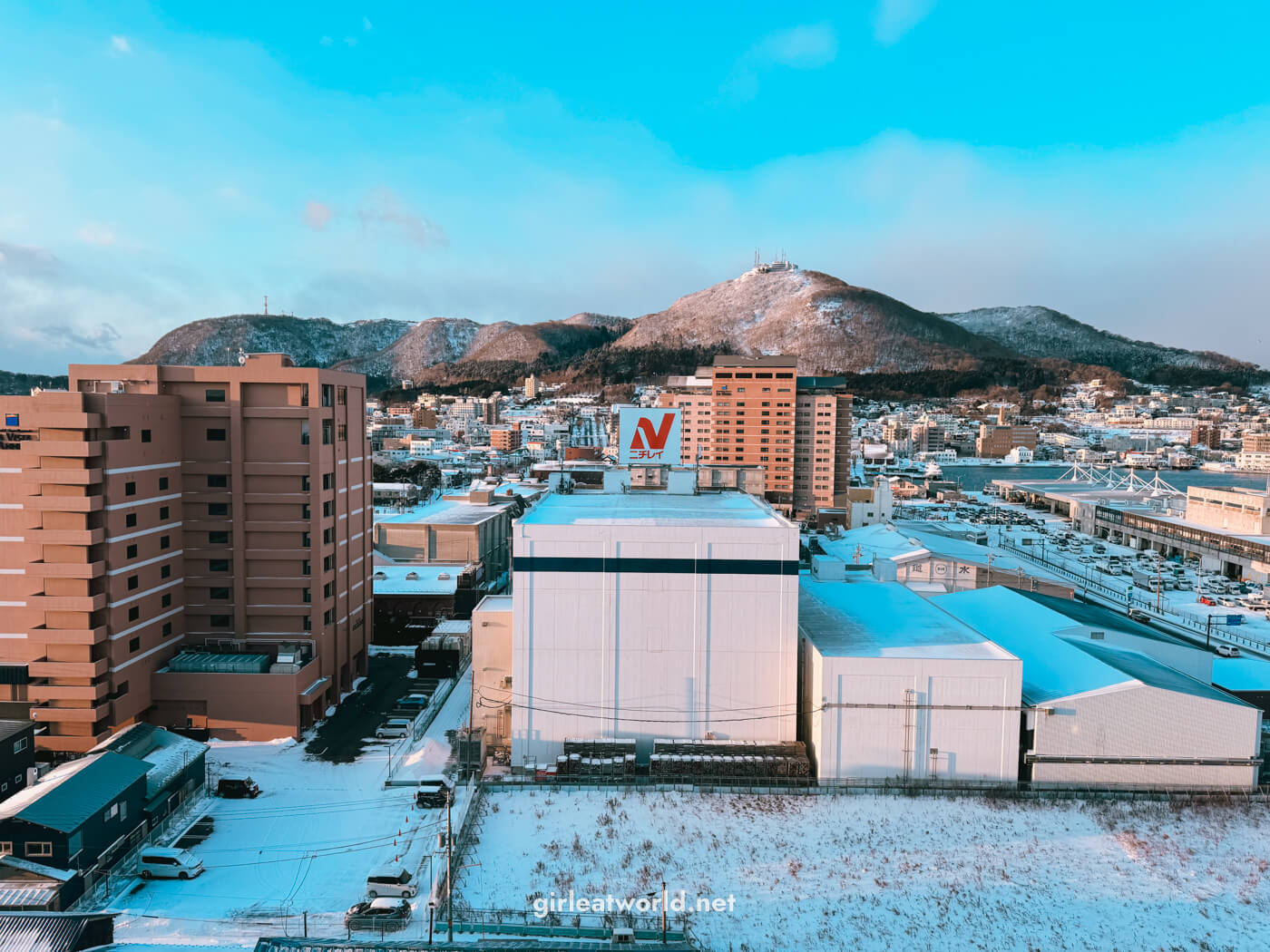
The hotel is nice and modern. We booked the Premium King Room, which was relatively big for Japanese hotel. The hotel is about an 8-minute walk from the Hakodate Station, which also makes it an easy walkable distance to some of Hakodate’s best sights.

But the best part is, they have their own onsen on the rooftop (13th floor) so you can take a dip every night after exploring Hakodate. The onsen has a nice view of Hakodate as well, and free popsicles you can enjoy after your visit.
I also appreciate that kids get to stay for free here. Some hotels in Japan would charge extra based on the number of occupants, which is a bummer. Hakodate Kokusai did charge a 300 yen onsen tax fee per person, but I’ll gladly pay that since we had unlimited access to their private onsen.
How to get around in Hakodate
Hakodate is a compact city and very doable on foot or by public transportation.
But of course, one of the most convenient ways to explore is to hail a Taxi. I did have to use the taxi a few times in Hakodate as we arrived during a snowstorm.
The good thing about Hakodate is that there are plenty of metered taxis around the Hakodate area. Taxi fare starts at 600 yen and goes up based on distance (100 yen per 302m). If you’re just going within 3-4km, your fare would be around 1,300 yen. You can find out more about Hakodate taxi fares here.
Another way to get around is of course via public transportation, which in Hakodate consists of the City Tram and Bus. Fares are around 210-280 yen per adult.
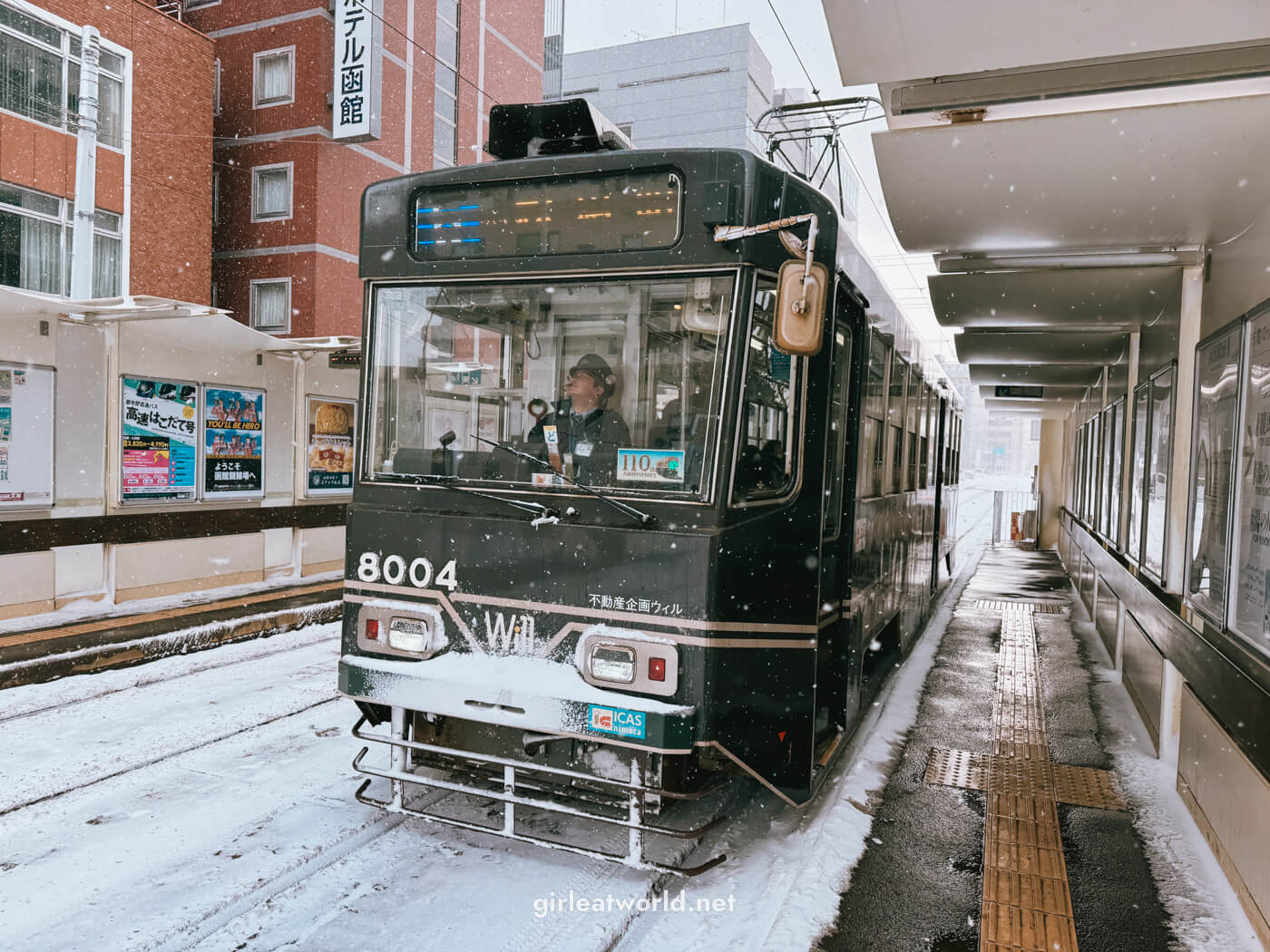
Lockers in Hakodate
Like the rest of Japan, there are plenty of lockers around Hakodate. It costs 400 yen for the small locker and 700 yen for the big locker.
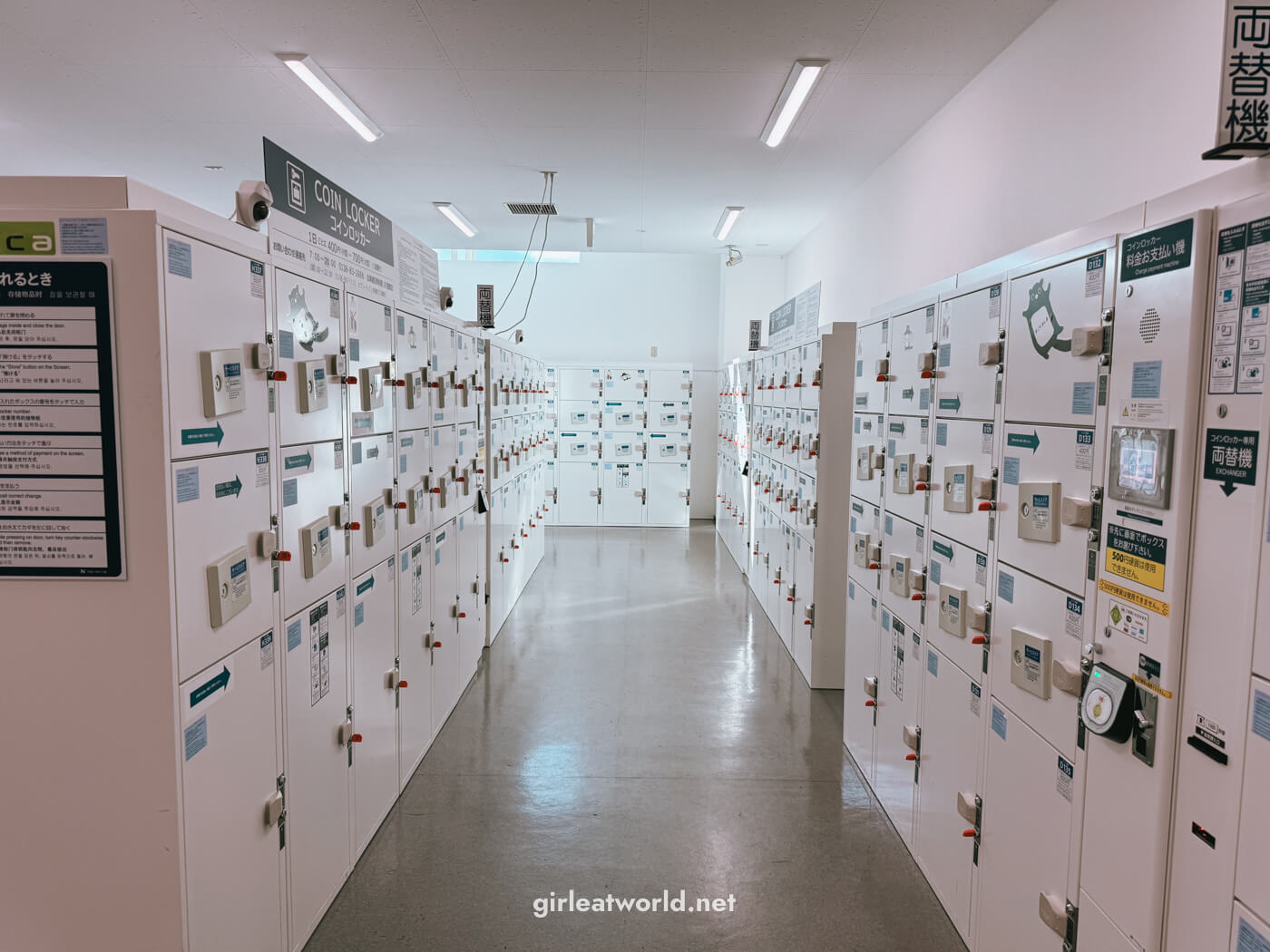
The lockers made it easy for us to check out things on our last day in Hakodate before our flight at 7 pm. We checked out from our hotel in the morning and stored our luggage at Hakodate Station before going about our day.
There are also lockers at tourist spots like Goryokaku Tower and the Hakodate Airport, but keep in mind that lockers are on a “first come first serve” basis.
What to do in Hakodate
And without further ado, here is what you can do while you’re in Hakodate:
1. Go up the Goryokaku Tower Observatory
One of the most famous things to do in Hakodate is to visit Goryokaku Tower, which allows you a full 360 view of Hakodate from 107 meters above.
🎟 Purchase your ticket online: Get your Goryokaku Tower Ticket online for easy redemption via Klook!
Goryokaku Tower is open from 9 AM to 6 PM. It costs 1,000 yen per adult to visit. Kids under 6 can go for free. From Hakodate Station, there are a few direct bus that takes you near the Goryokaku Fort Park entrance.
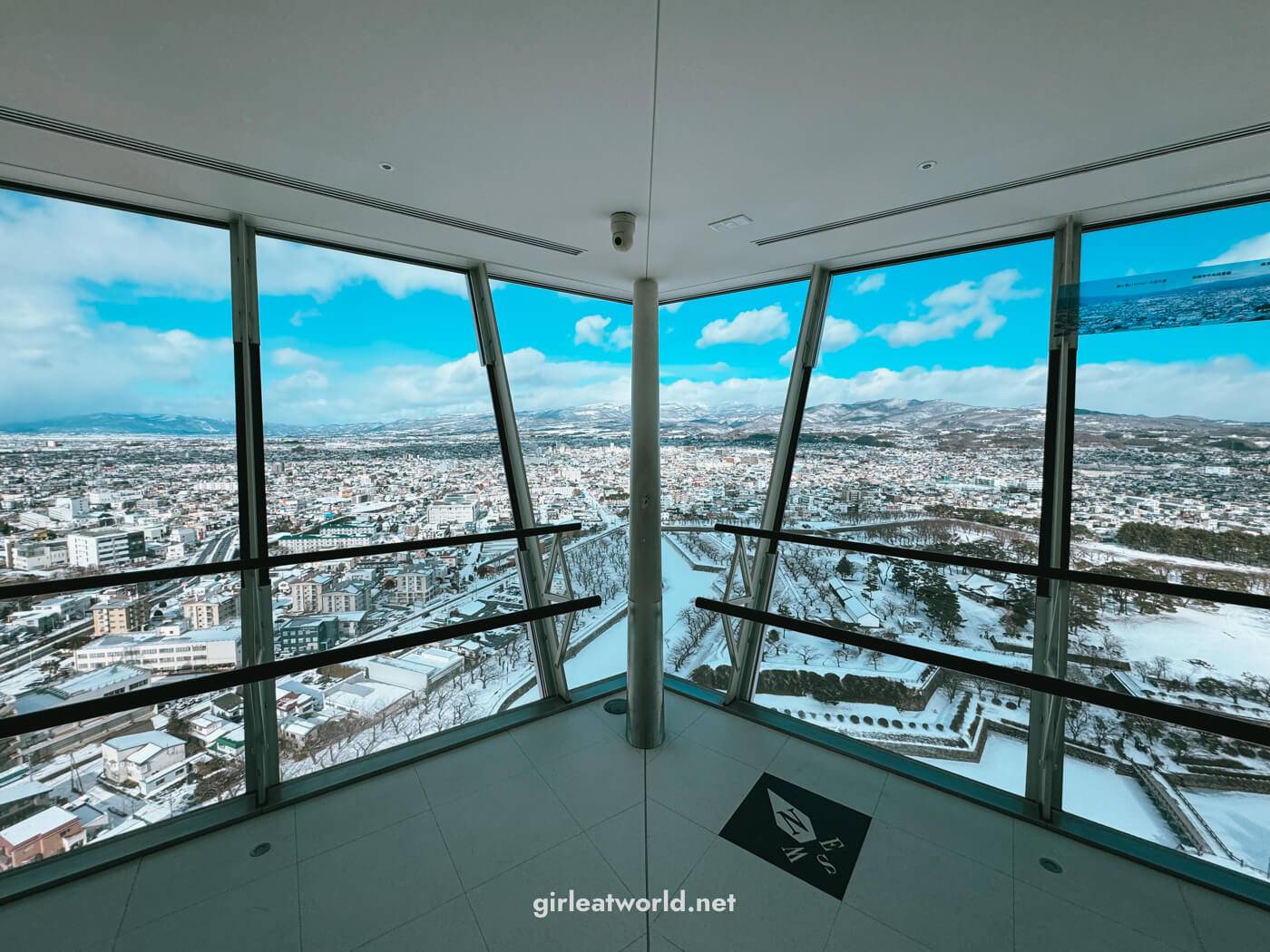
From the top of Goryokaku tower, you’ll get a nice full view of the star-shaped Goryokaku Fort.

If the day is clear, you’ll be able to see Mount Hakodate and the bay area from the tower too.

Aside from the view, there is a small exhibit that will tell you the history of Goryokaku Fort. Goryokaku Fort was the site of Japan’s last civil war. For nearly three centuries, Tokugawa Shogunate ruled Japan. When they began to lose power, many fled to Hokkaido. Goryokaku became the base for the deserters from the Japan mainland. It is where the last battle between the deserters and the new Meiji government forces happened.
In 1868, the Meiji government forces won the battle and modernized Hakodate. I do wonder, if the battle had a different outcome, could Hokkaido be a separate country from Japan? 🤔
Anyway, at the tower there is a glass floor section that allows you to see the streets directly below the tower – not for the faint of heart, I suppose.
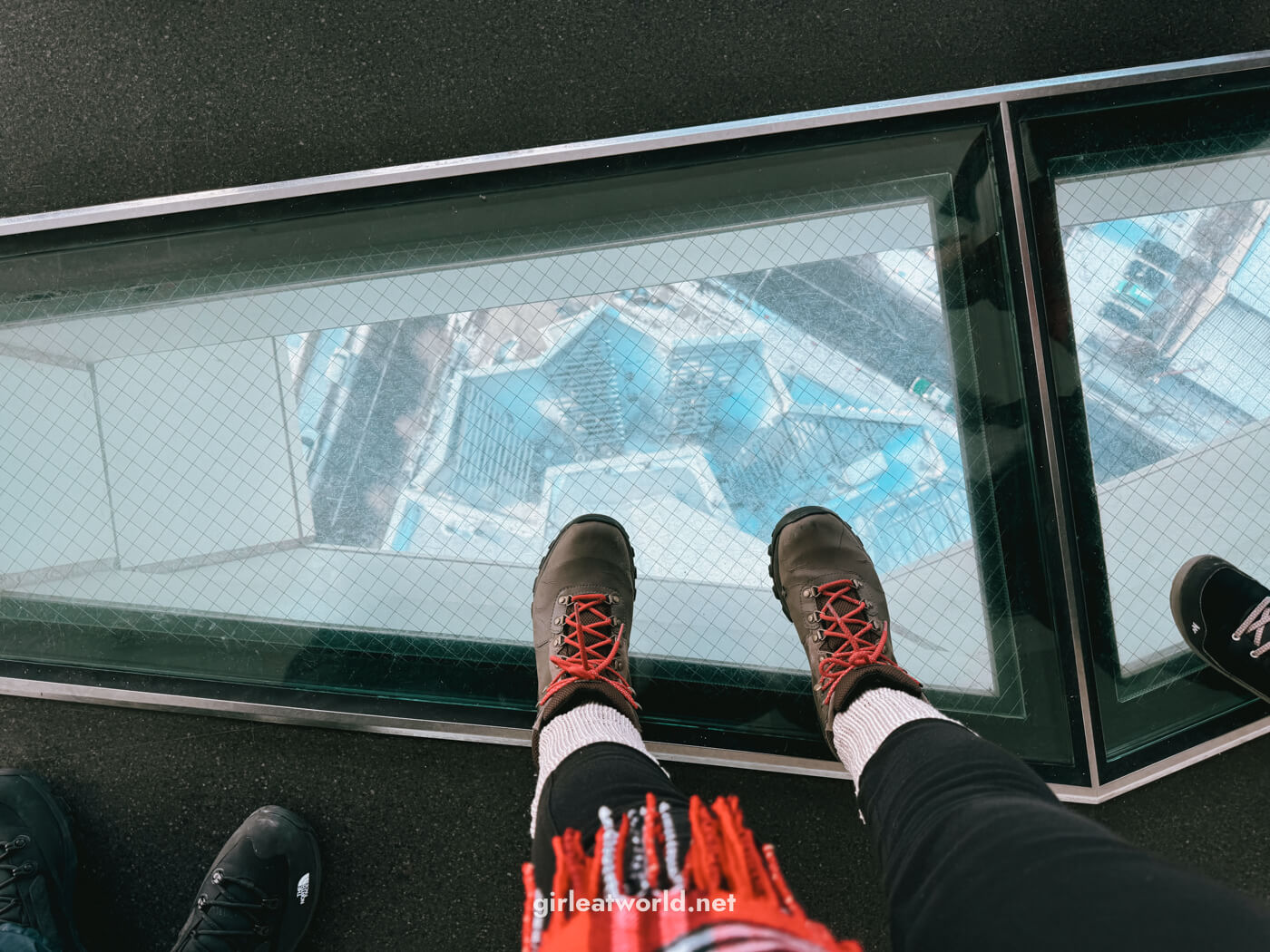
After you’re done with the tower, you could walk around the fort itself. Or, across the street from Goryokaku Tower is Hakodate Museum of Art. It is a small museum, so please check out the current exhibit before you go and see if it is of interest to you.

2. Enjoy the Famous Hakodate Night View
In Japan, there are three cities that are popular for their night views. Known as the Three Major Night Views of Japan (Nihon Sandai Yakei), the three cities are Nagasaki, Kobe, and yes, Hakodate.
Mount Hakodate Observatory: For more information about visiting the Mount Hakodate Observatory, please read my post here.
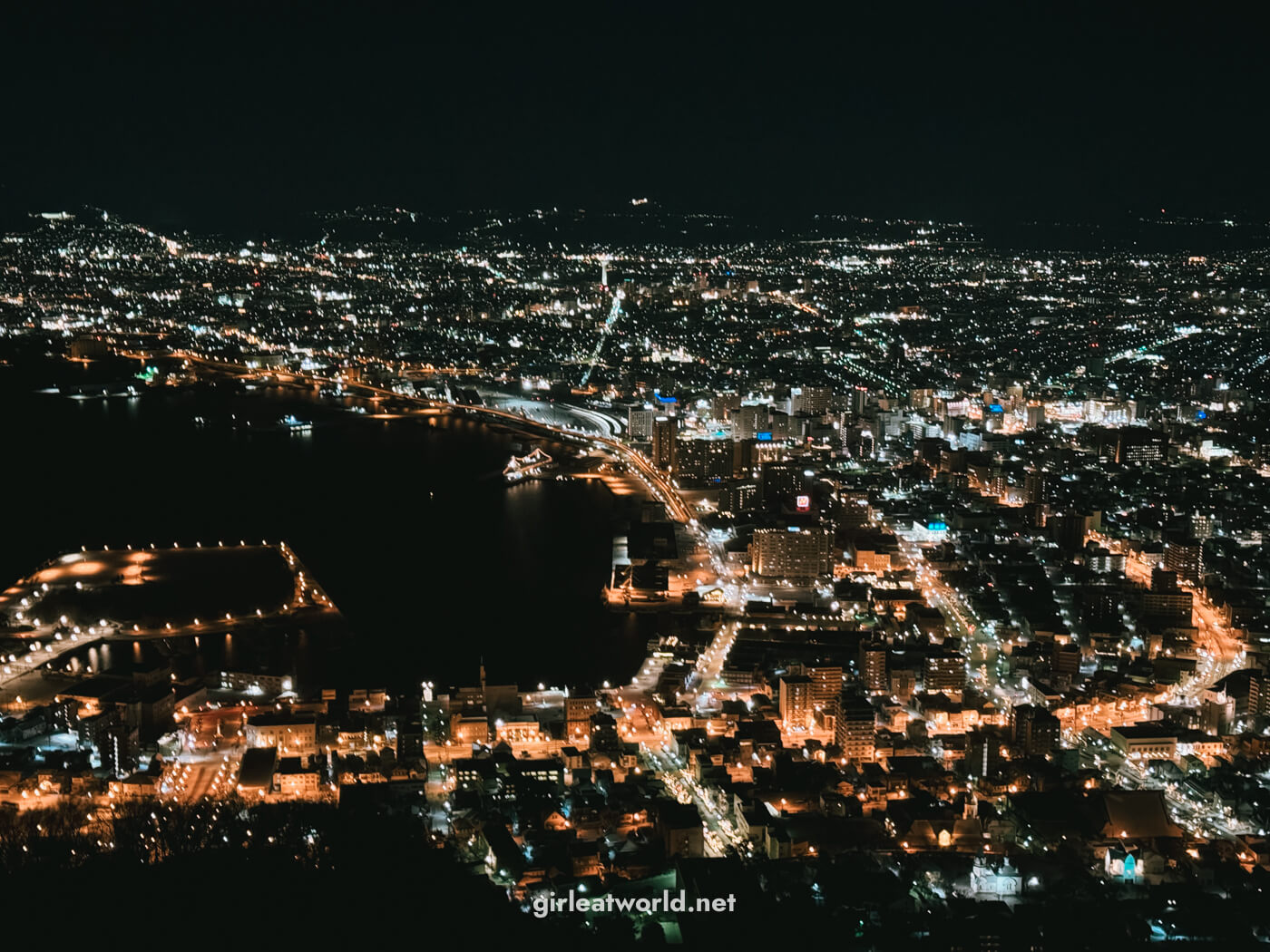
They are also often called the “ten million dollar” night view. However, this specific view from Mount Hakodate Observatory is the only one that has been awarded as a 3-star experience by Michelin.
3. Breakfast at Hakodate’s Morning Markets (Hakodate Asaichi)
If you’ve gone up the Mount Hakodate Observatory, you’ll notice that Hakodate is pretty much surrounded by the ocean. And yes, that means they have easy access to fresh seafood!
Right by the Hakodate Station, there are plenty of morning markets that you can visit. Starting from as early as 5 AM, each of the markets offers the day’s freshest catch – think fresh ika (squid – one of Hakodate’s specialties), various crabs (hairy crab and king crab), uni (sea urchin), and ikura (salmon eggs).
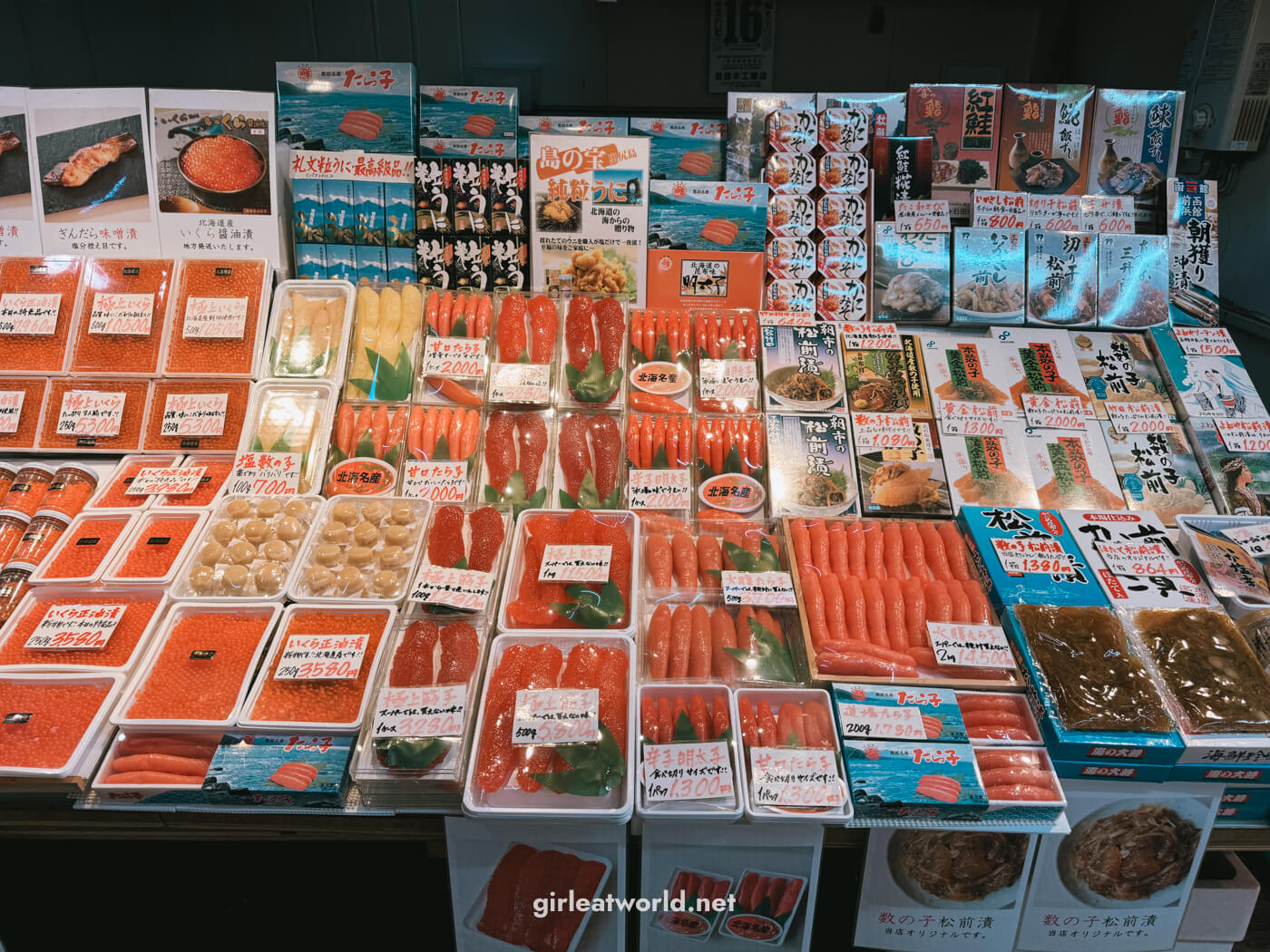
Even if you’re not a fan of seafood, I still think it’s worth a visit. Another unexpected famous non-seafood item to get in the morning markets is… Yubari Melon. You could get a slice of this sweet, juicy melon for 400 – 500 yen per slice.
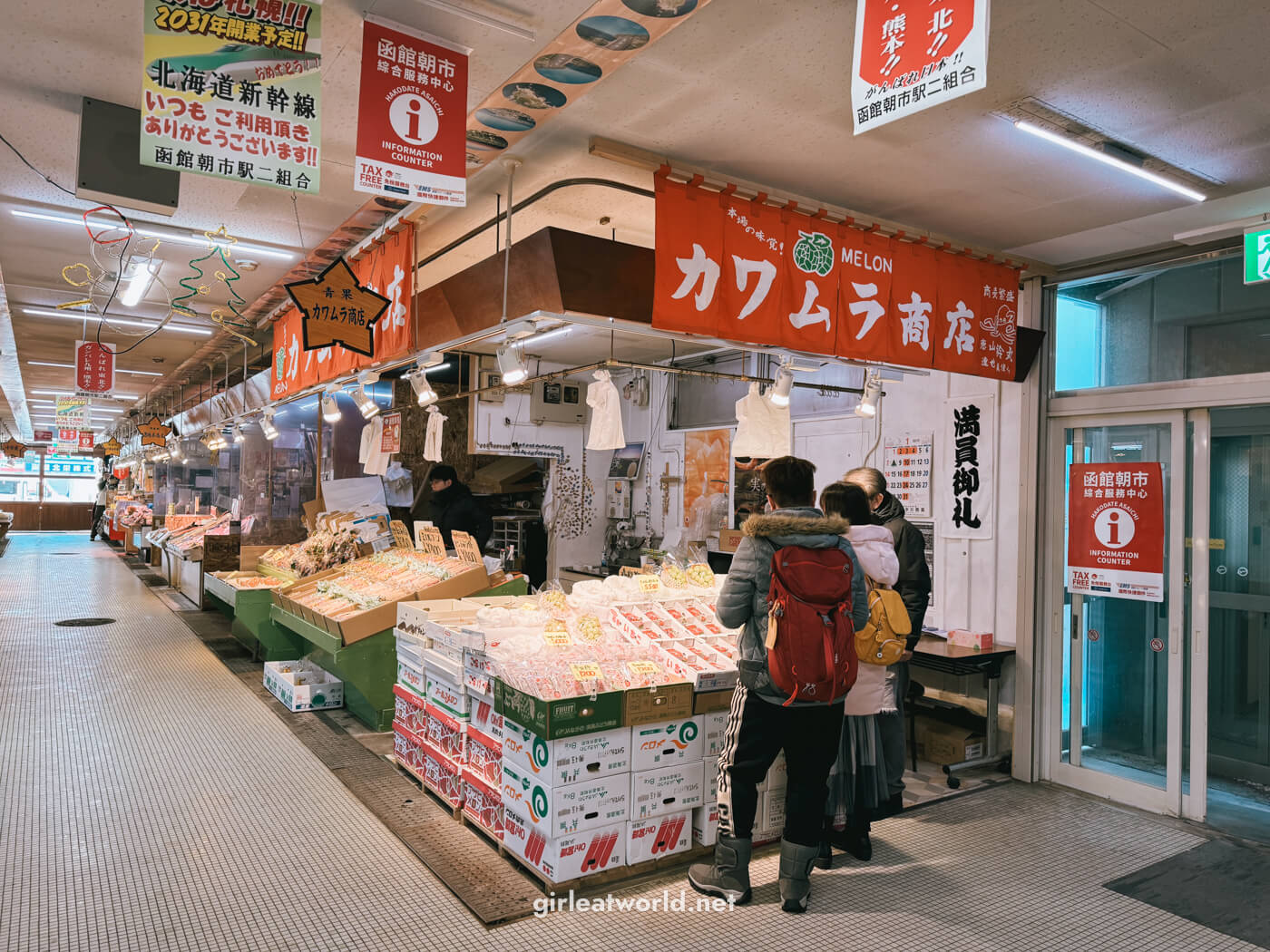
One market that I recommend is Ekini Market, an indoor market that is literally across the street from the Hakodate Station. If you prefer to go to a sit-down restaurant, check out Donburi Yokocho next door where there are plenty of restaurants with ingredients that are fresh from the market.
What to eat at the morning markets: I will elaborate more on what to eat in the morning market in the “What to Eat” section below!
4. Shop at Kanemori Red Brick Warehouse
This red brick warehouse was built in 1868, to sustain trading operations when Hakodate became Japan’s first international port. Nowadays, it has been converted into a commercial space where you can enjoy restaurants and shop for dessert and souvenirs to bring back.
5. Explore the Motomachi District of Hakodate
Motomachi district is located at the foot of Mount Hakodate. When Hakodate became the first Japanese fort to open to international trade, Motomachi became the residential site for the early foreign traders.
There are a few sites to visit here, and you can get a bundle ticket for the attractions. We paid 720 yen per person for 3 attractions.
Here are the three that I visited:
1. Learn about the Native People of Northern Japan
Before people from mainland Japan came to the area, Hokkaido was occupied by the native people of Northern Japan. One of the ethnic groups is called Ainu, and you can learn about their culture and way of life at the Hakodate City Museum of Northern Peoples.
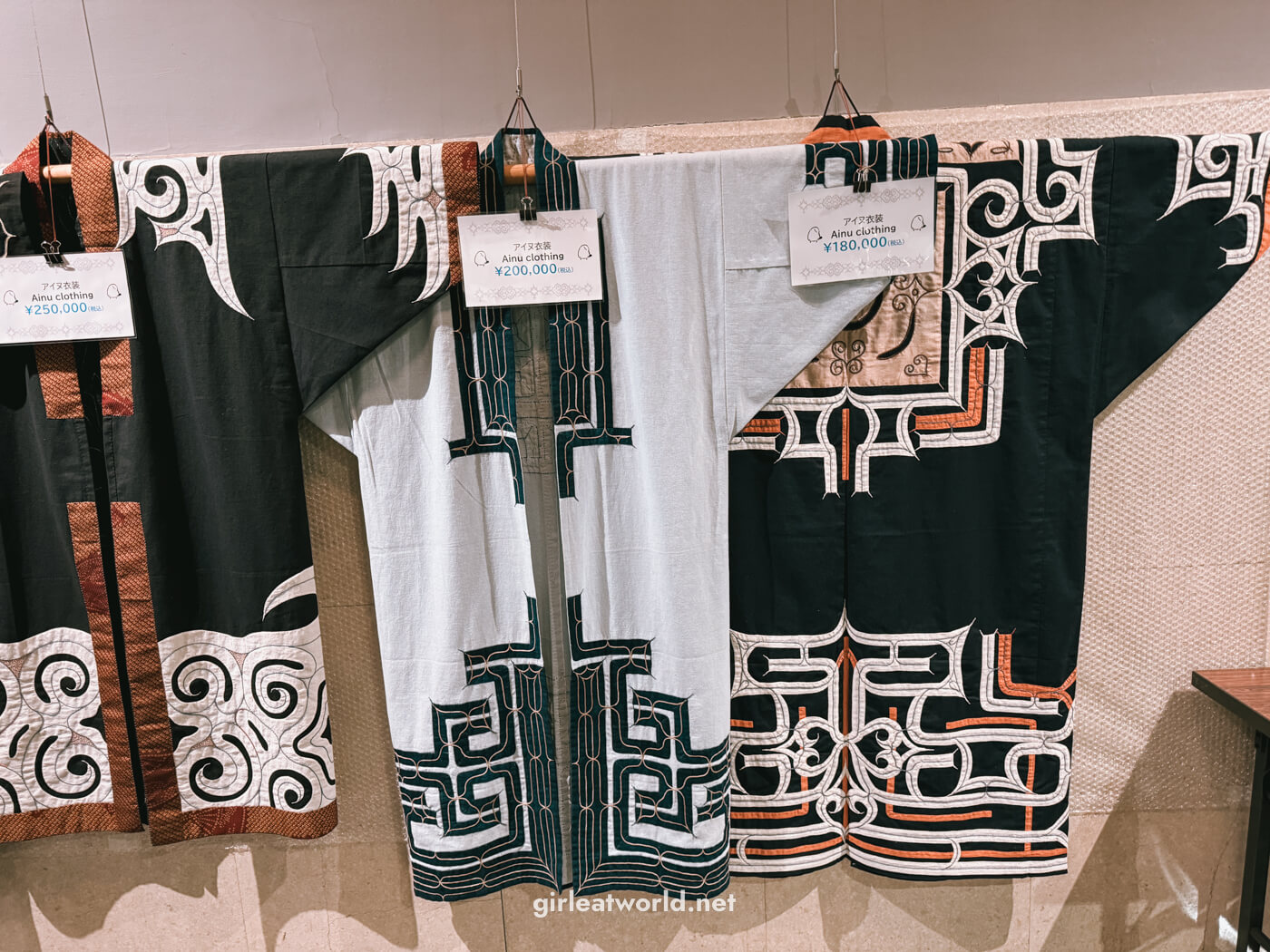
2. Sip some tea at the Former British Consulate of Hakodate
The Former British Consulate of Hakodate is where you can learn about the history of foreign influences on Hakodate. When the foreigners first arrived in Hakodate, they had issues pronouncing the name and would say “Hakodadi” instead. You can also learn about the ambassador who lived in this building and their contributions to Hakodate.
At the first floor of the former consulate, you can enjoy a British afternoon tea for 2,800 yen per person, or some tea and cakes from 1,200 to 1,500 yen. I read reviews that the afternoon tea was not worth it, so I got the scones with jam and the burnt cheesecake instead.
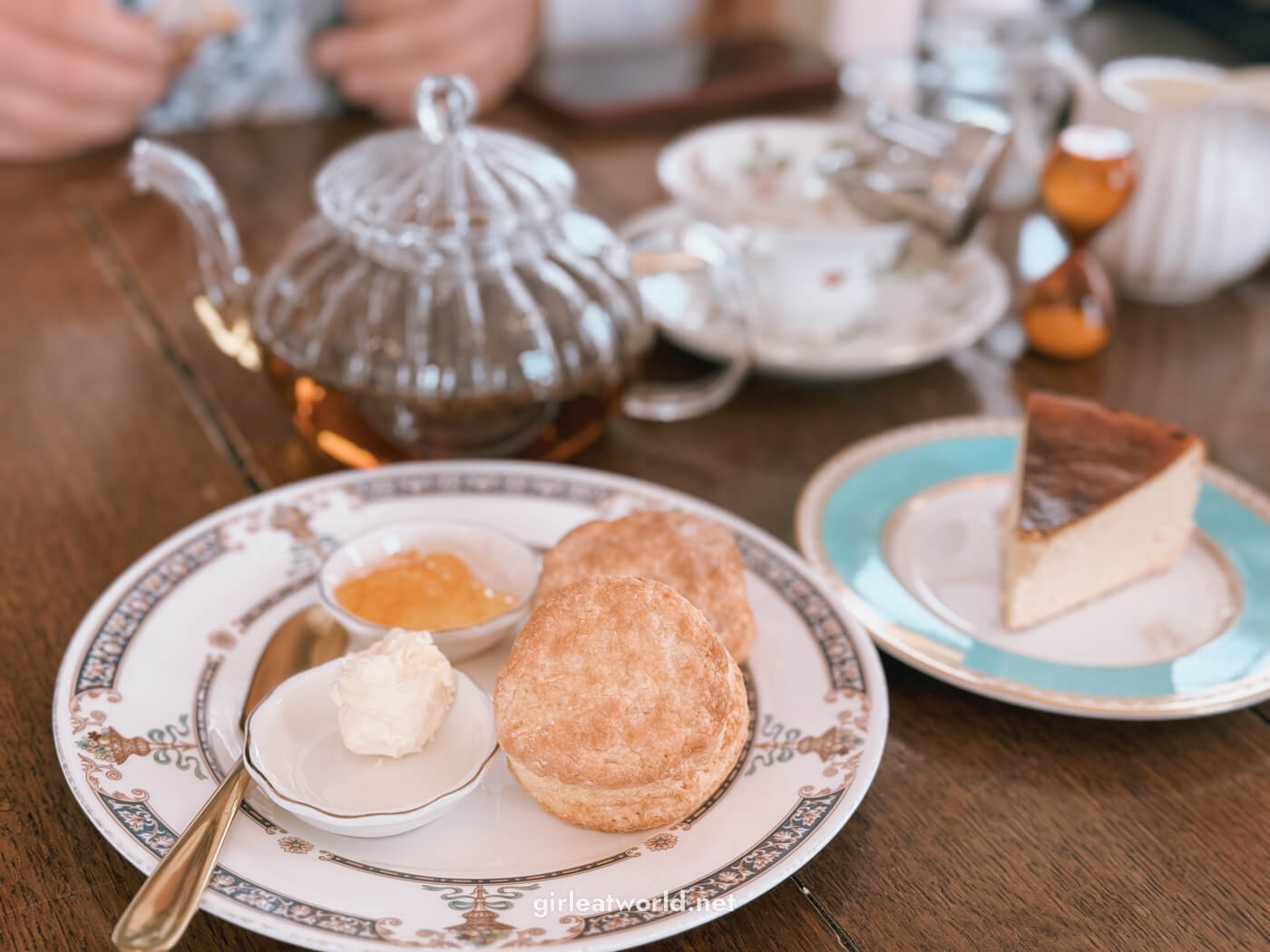
I’m happy to report that these two were worth it, especially the cheesecake! It was served with french salt which was a new way to have cheesecake for me.
3. Old Public Hall of Hakodate Ward
This building is where the Imperial family stayed when they visited Hakodate. You’ll get to view all the bedrooms, the dining room, and the reception hall. I also think the exterior of the building is very beautiful!
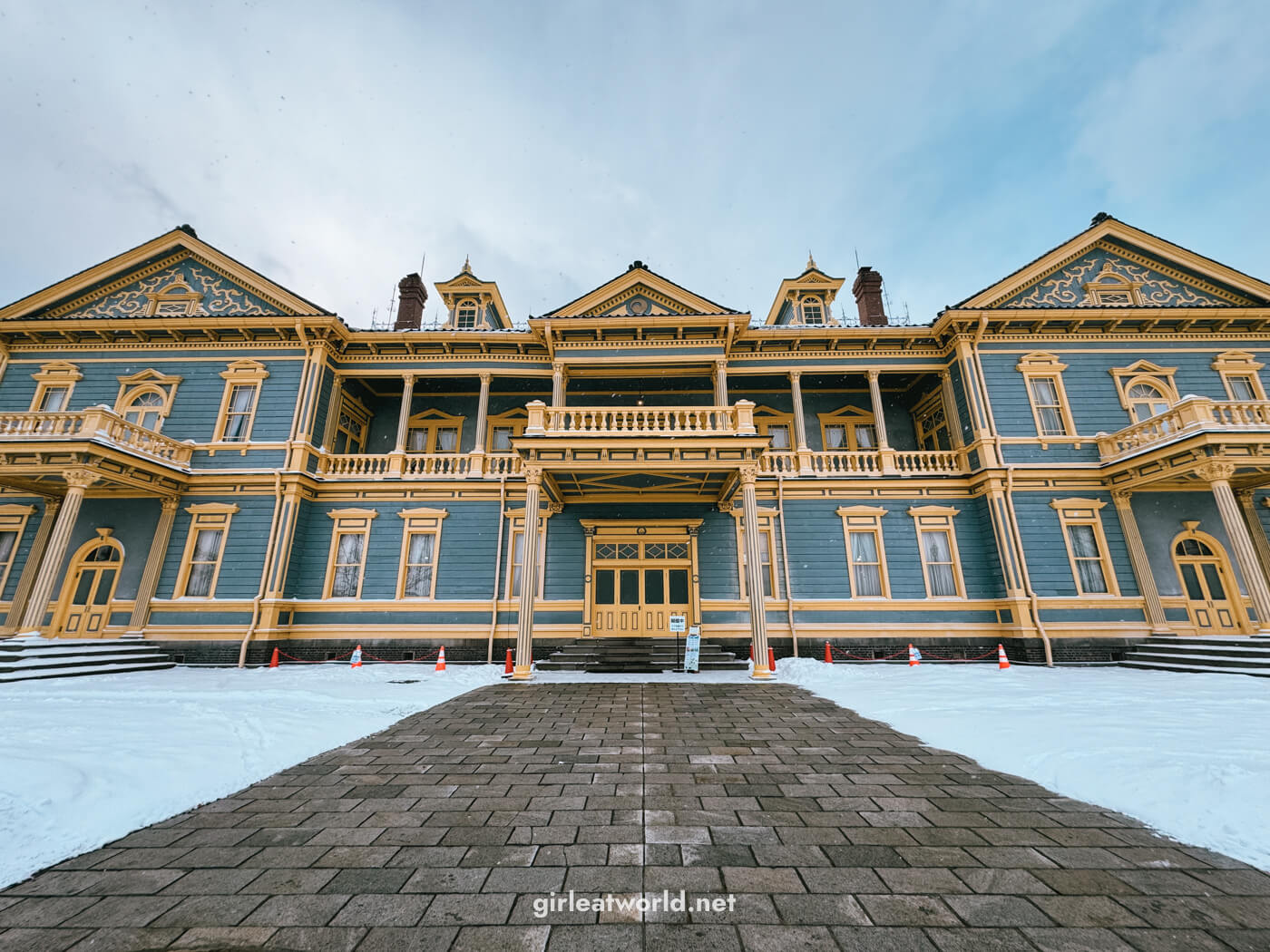
6. Tour Onboard the Mashu Maru Ferry
Mashu Maru was the ferry that operated between Hokkaido and Honshu, Japan’s main island. When a tunnel was built to connect the two islands, demands for the ferry decreased and it ceased operation in 1988.
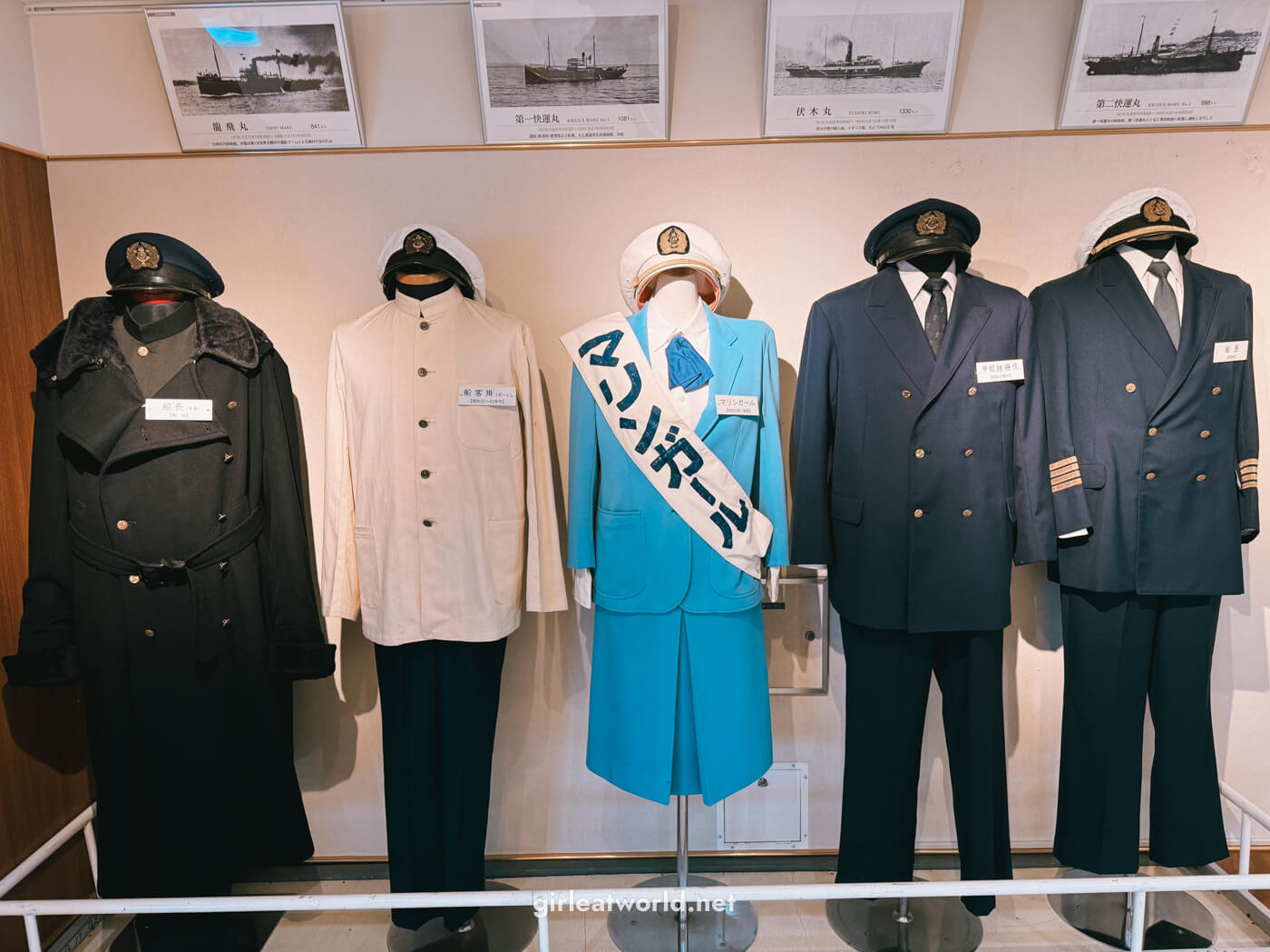
The ferry has since been converted into a museum and permanently docked near Hakodate Station. It costs 500 yen per person to enter the museum. Inside, you can see the history of the ferry during its heyday. Although most of the exhibit is in Japanese, I still found it interesting to see.
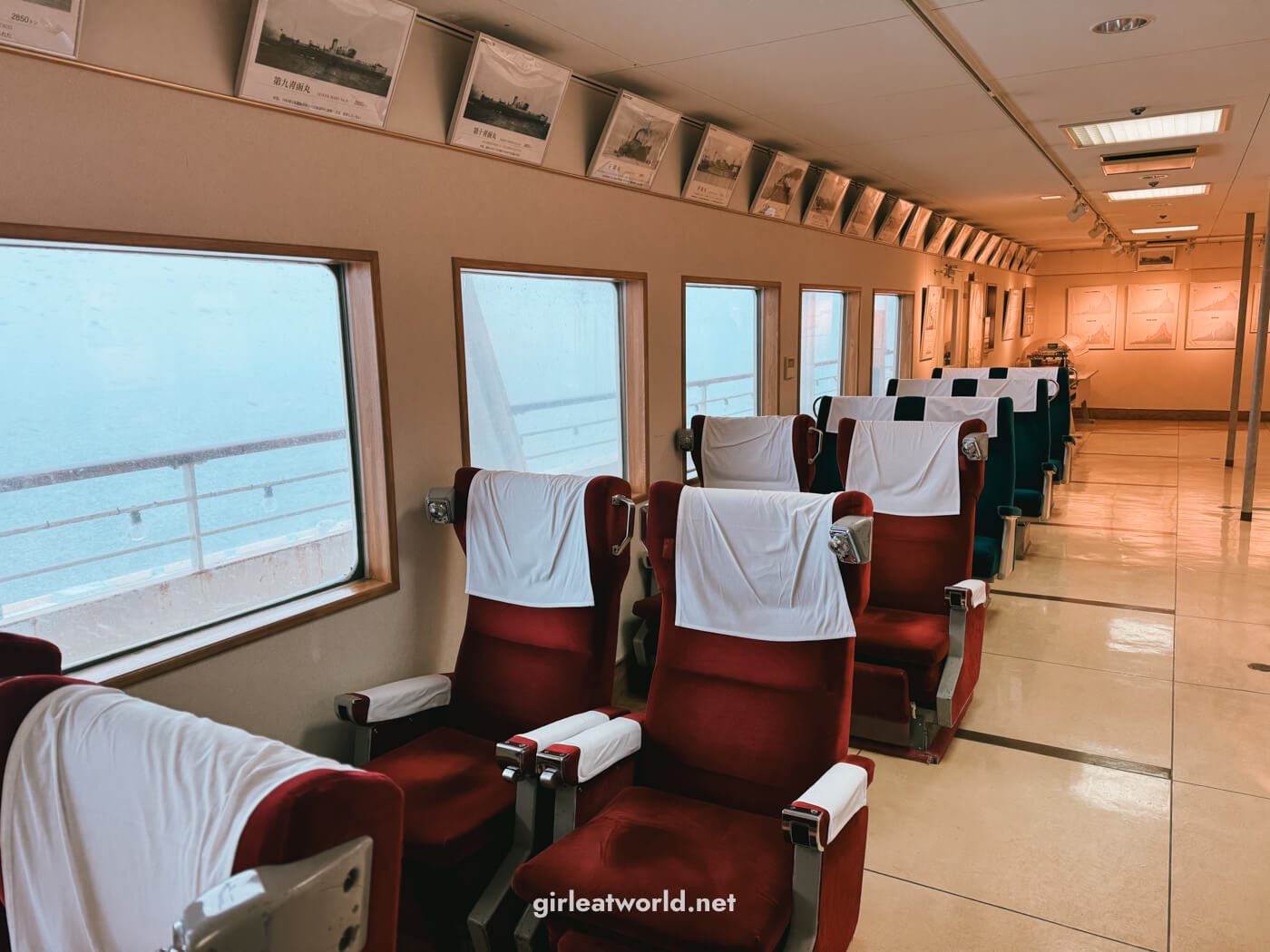
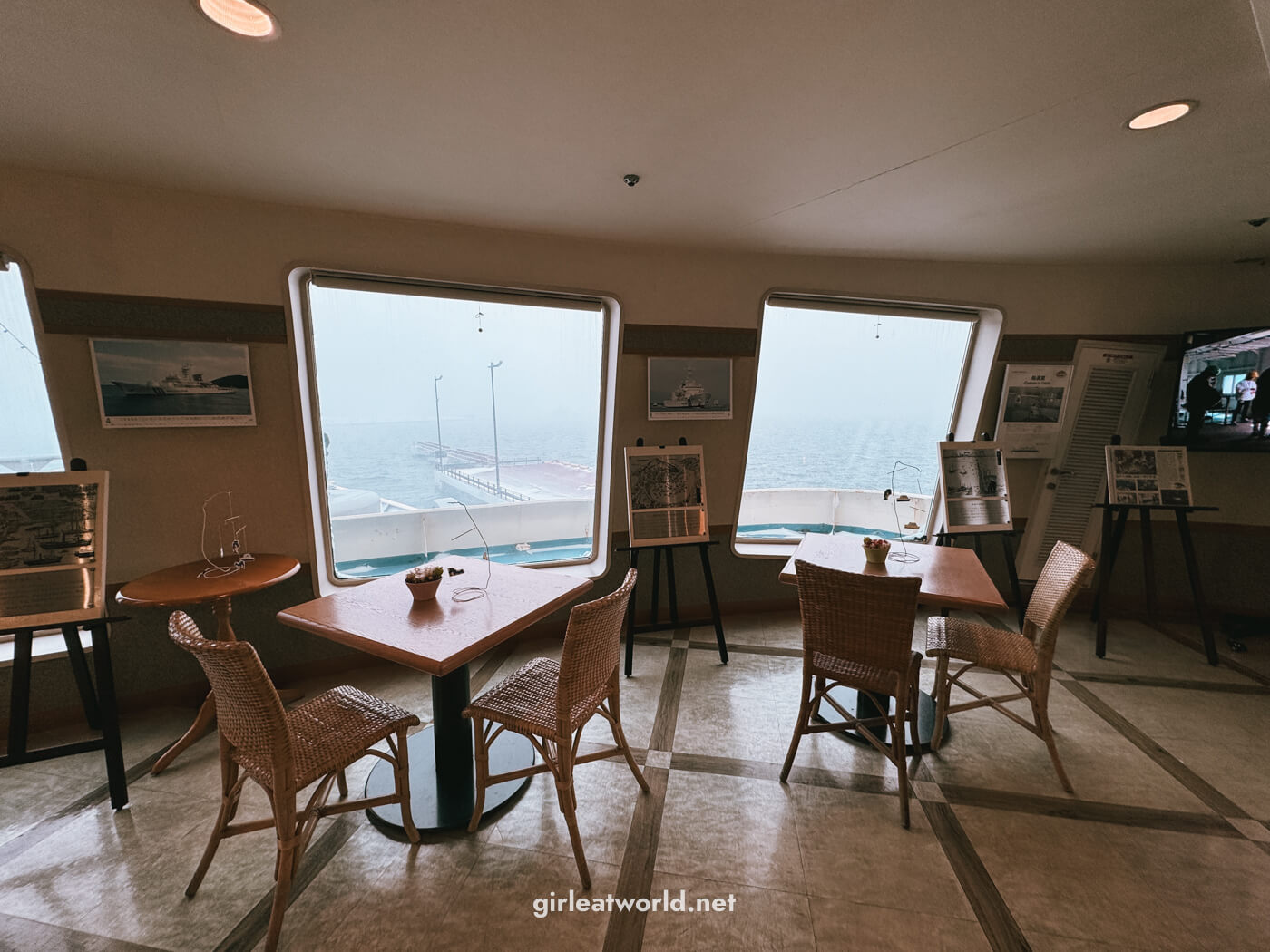
7. Take a dip at an Onsen
If you’re visiting during the colder months, you’ll want to check out an onsen, Japan’s famous hot spring. It’s the perfect way to unwind after a day full of traveling.
Onsen Tips: Visiting an onsen could be intimidating, so be sure to check out my onsen etiquette guide!
In Hakodate, there are a few onsens worth visiting. Here are my picks:
- Yachigashira Hot Spring – Located at the foot of Mount Hakodate, it is very convenient to visit from Hakodate. Costs 460 yen to enter.
- Yunokawa Onsen Town – An onsen town located closer to the Hakodate airport, famous for its clear and odorless water. There are about 20 onsens in the town nowadays.
8. See Japanese Macaque Bathe in an Onsen
Right by Yunokawa Onsen Town is the Hakodate Tropical Botanical Garden. But most people did not come here for the plants – they came for the monkey onsen!
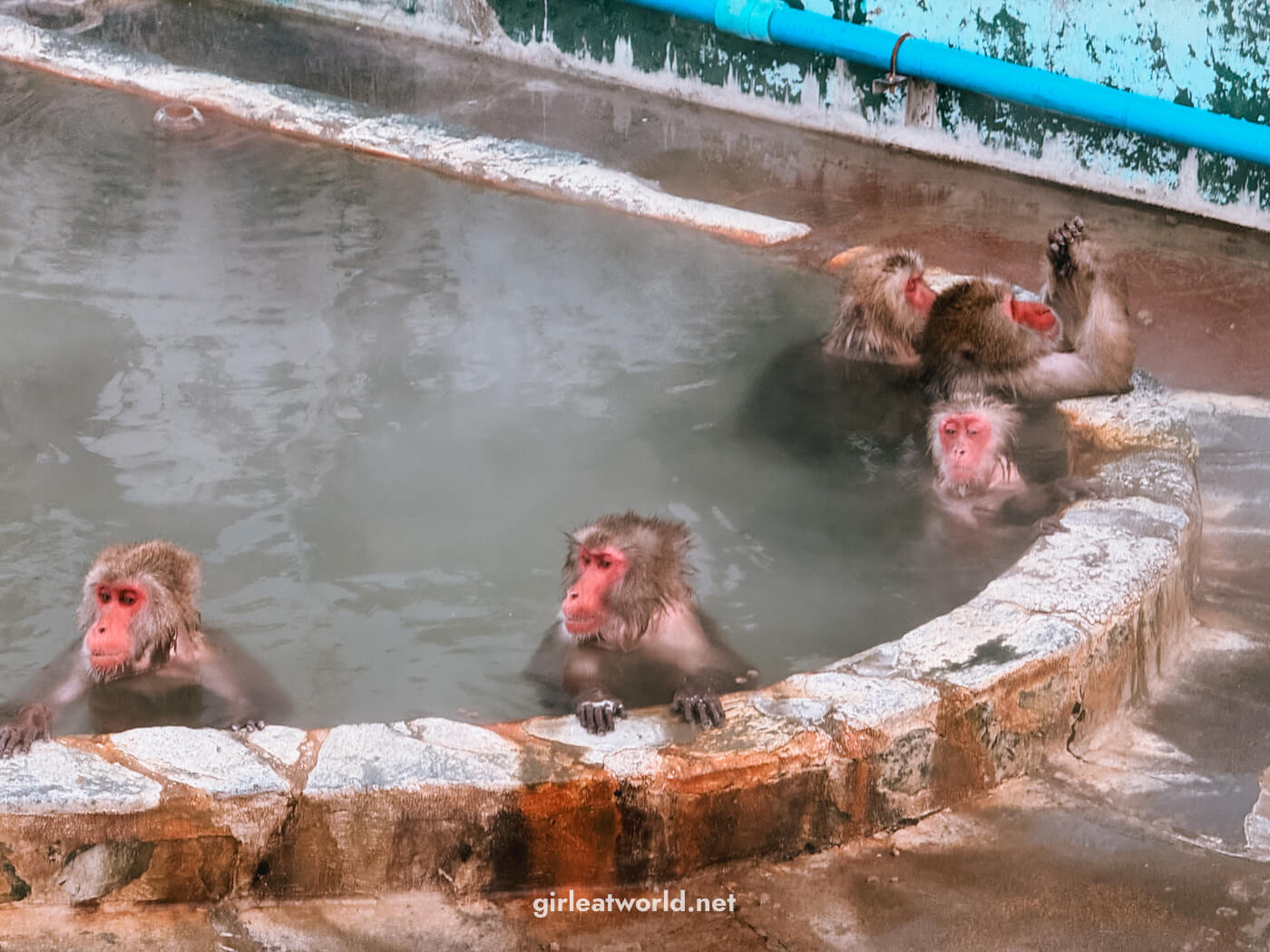
Admission to the garden is 300 yen, and you can buy food for the monkeys for 100 yen.
Take note these are not wild monkeys. They’re actually in an enclosure that has an onsen in it. The monkey enclosure is located outdoors at the entrance of the garden. The onsen is only active during winter and spring time. When one of the monkeys has a baby, they will drain the water and deactivate the onsen.
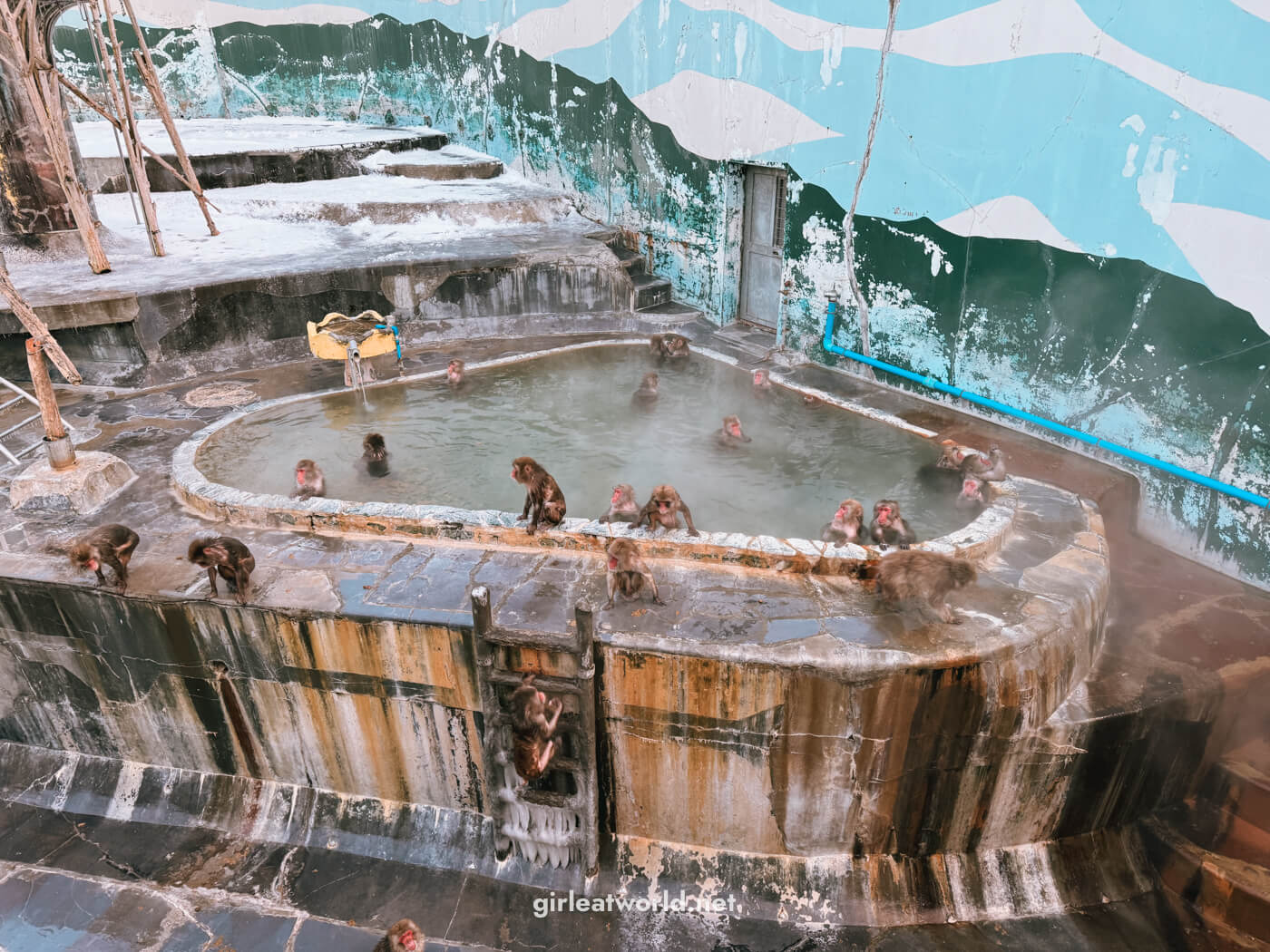
I’ll be honest, I would not come to this botanical garden on its own if it were not for their monkey onsen. The garden itself is quite small, and coming from Singapore, it features types of plants that I already see every day at home.
However, since it’s located close to the airport, we decided to visit before our flight. It costs 1,200 yen one way via taxi to get here from the airport.

There is also an ashi-no-yu aka onsen footbath which you can enjoy in the garden. You’ll be able to buy towels for 100 yen at the ticket office.
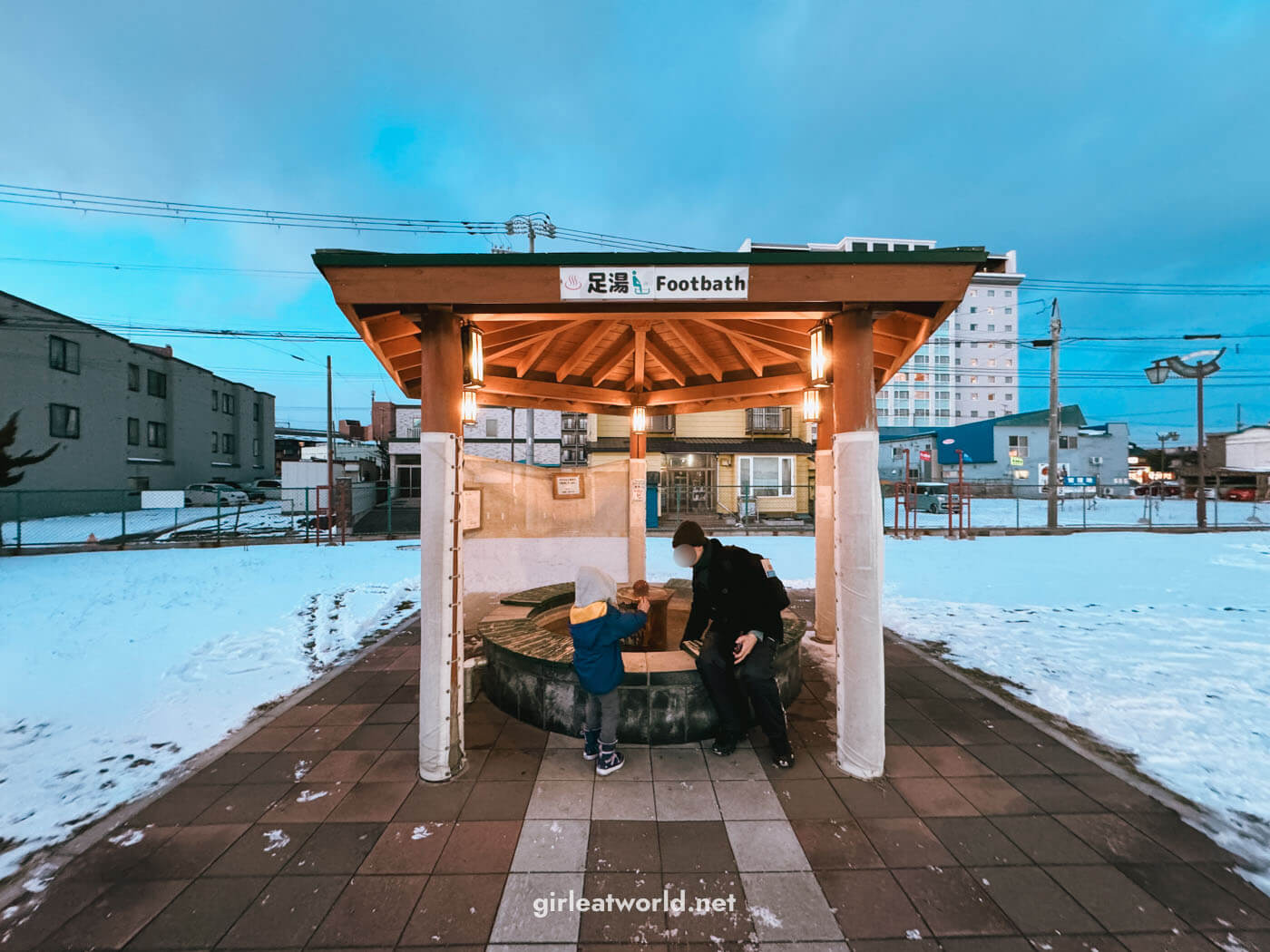
What and Where to eat in Hakodate
Hakodate is known as a gourmet town. Many Japanese domestic tourist come to Hakodate to eat!
1. Hakodate Shio Ramen
Hakodate is known for Shio (salt) ramen. It is part of the “three great ramen of Hokkaido”, with the other two being miso (fermented soybean paste) ramen in Sapporo and shoyu (soy) ramen in Ashikawa.
I personally am a huge fan of Shio ramen, so I was delighted to learn that Hakodate is known for shio ramen. I love shio ramen because the broth is clear and light, and leaves you feeling full but not “heavy” after eating a bowl of it.
I’m also happy to report that all the ramen shops in Hokkaido serves smaller half portion or 2/3rd portion of their noodles. Comes in handy in case you’re not feeling too hungry or you want to go on a ramen marathon.
Where to have Shio Ramen in Hakodate
In Hakodate, I tried two ramen shops and I enjoyed both of them:
- Enjin 炎陣 Hakodate Noodles (near Hakodate Station)
- Menchuubo Ajisai Ramen (3 branches in Hakodate)
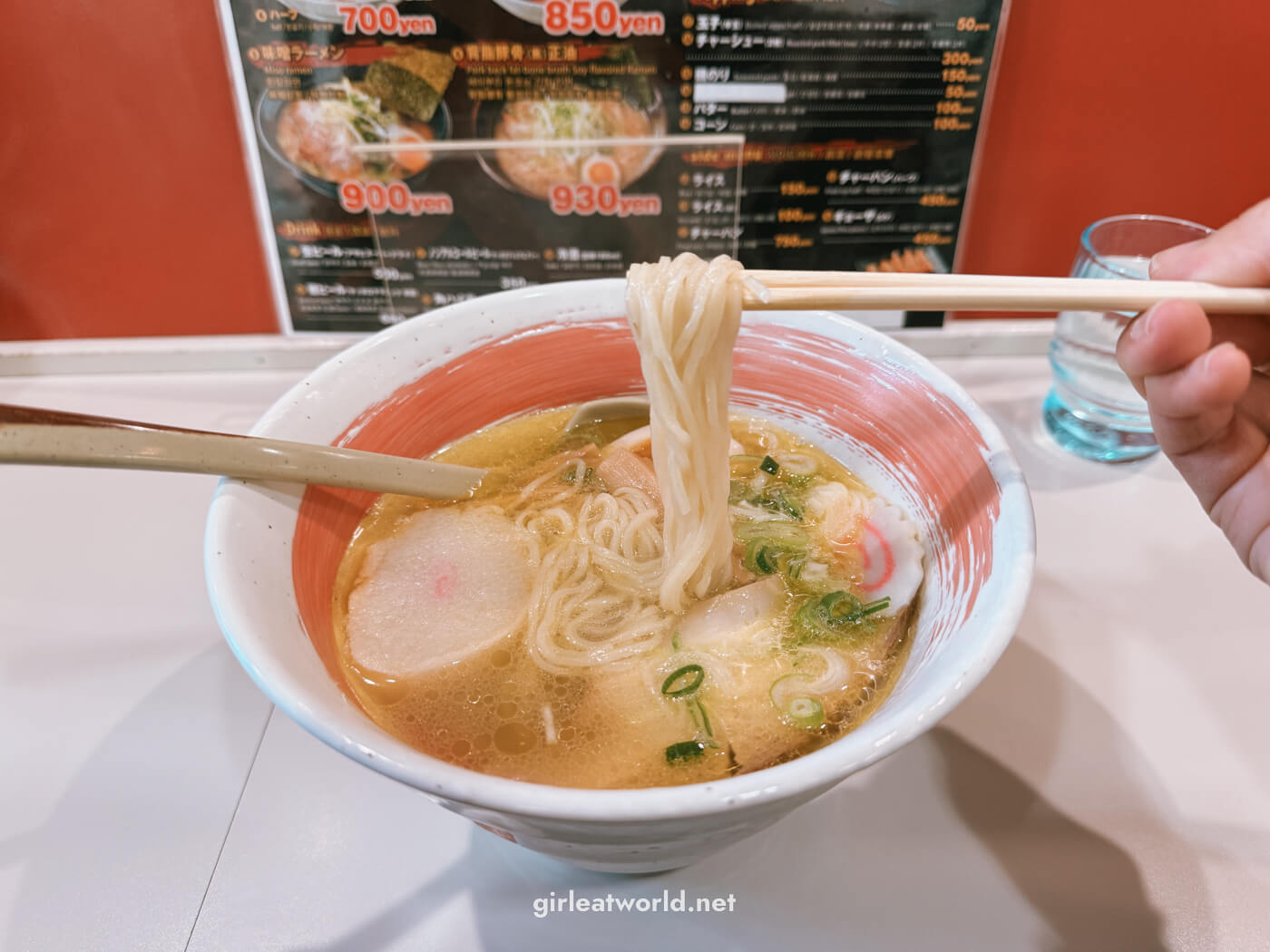
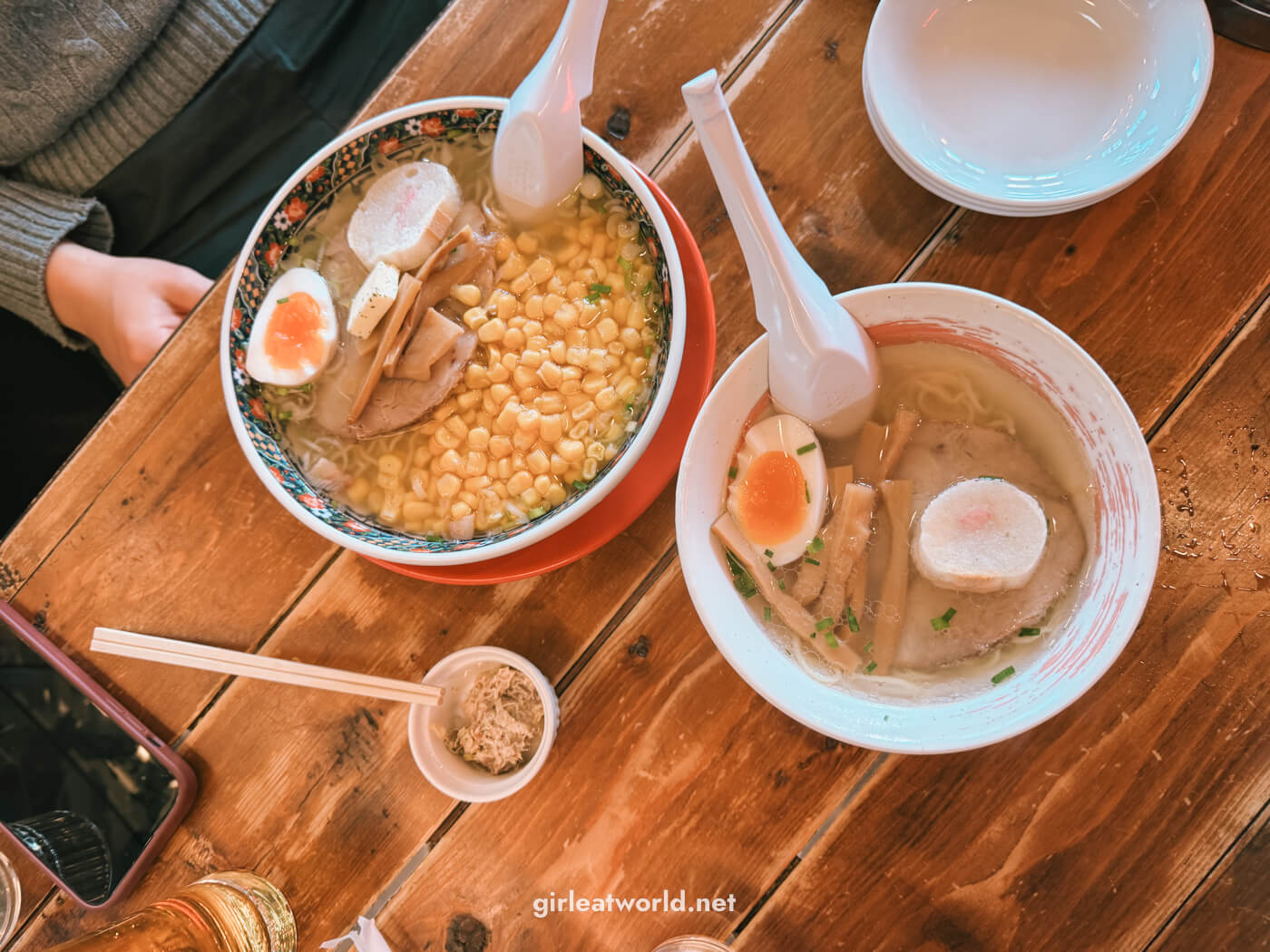
2. Fresh Seafood at the Morning Markets
As I mentioned before, the area near Hakodate station are full of morning markets with the freshest seafood catch of the day.
One such market that I recommend is Ekini Market, an indoor market that is literally across the street from the Hakodate Station.
You can pick a crab and have them cook the crab for you on the spot, and you can eat it right away at one of the communal tables in the market. If you live in Japan, you could also have the crabs sent to your homes. The price of the crab depends on its weight.
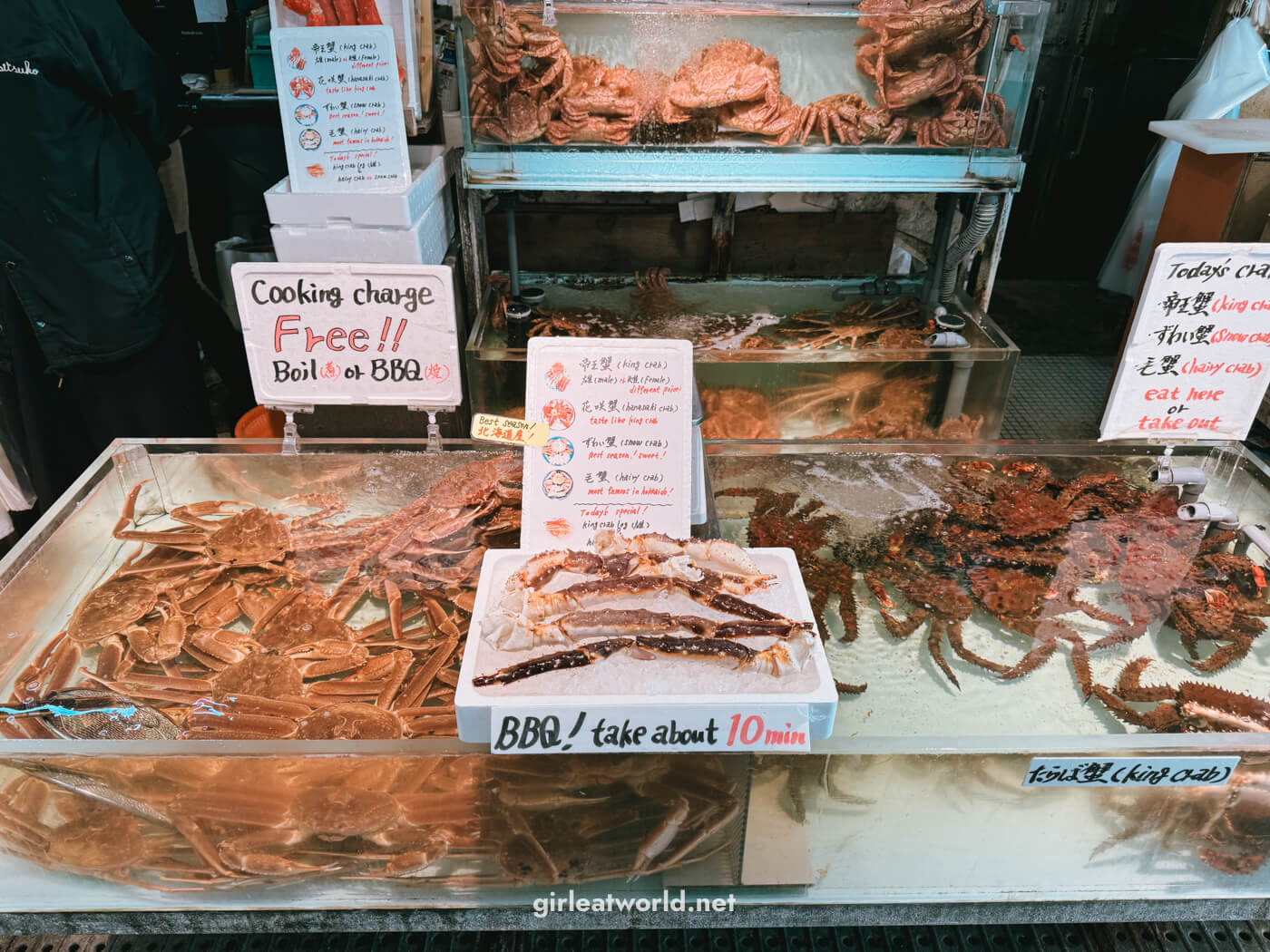
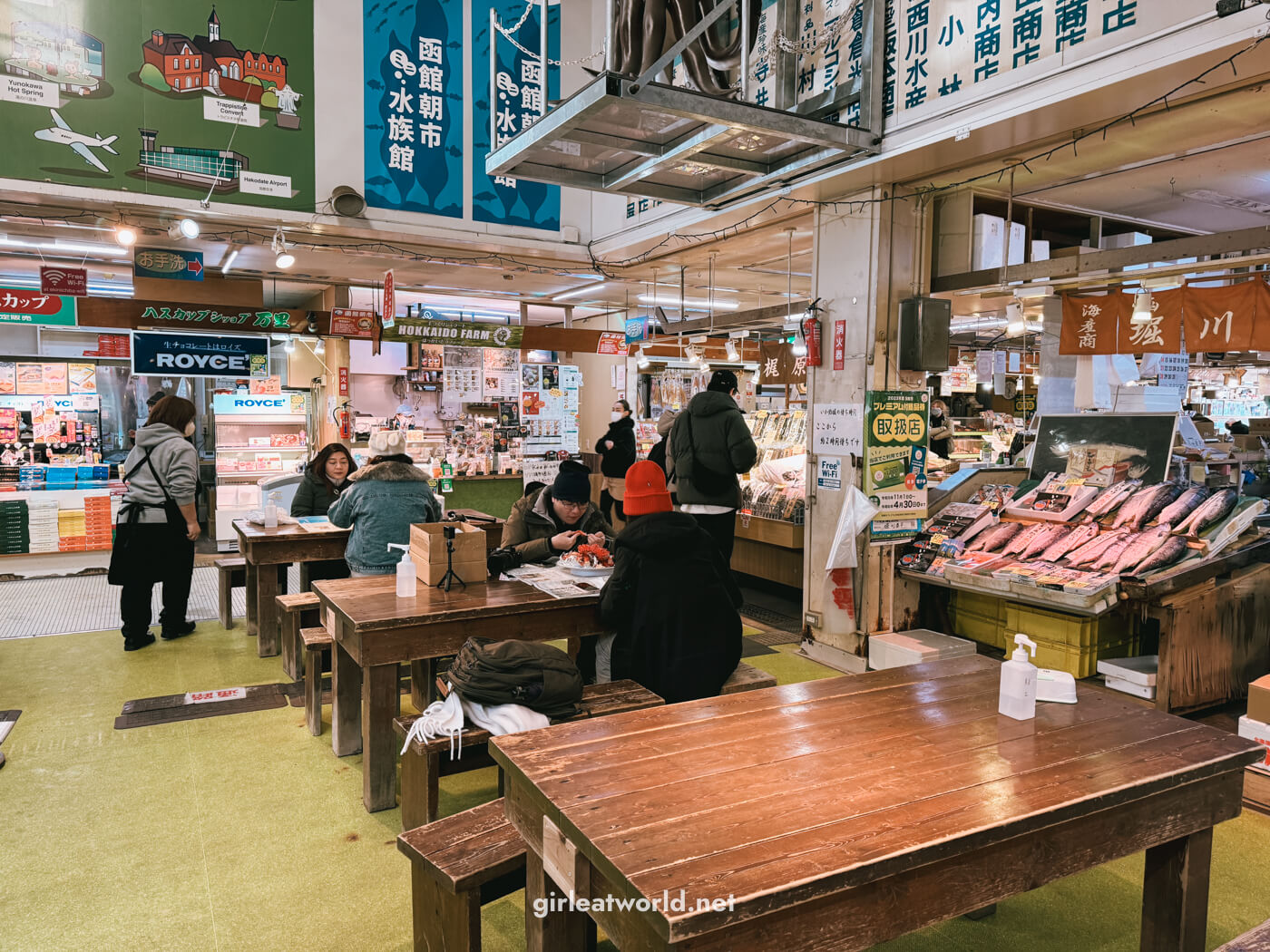
One stall I recommend is Daruma Sushi. For 3,240 yen, you get a 10-piece set of nigiri sushi and everything was very fresh.
Also worth noting is the female chef that mans the stall at Daruma Sushi. It’s an unusual sight to see, as sushi chef is usually a job held by males in Japan.
They open from 7:30 AM and close at 1:30 PM or until stocks last.
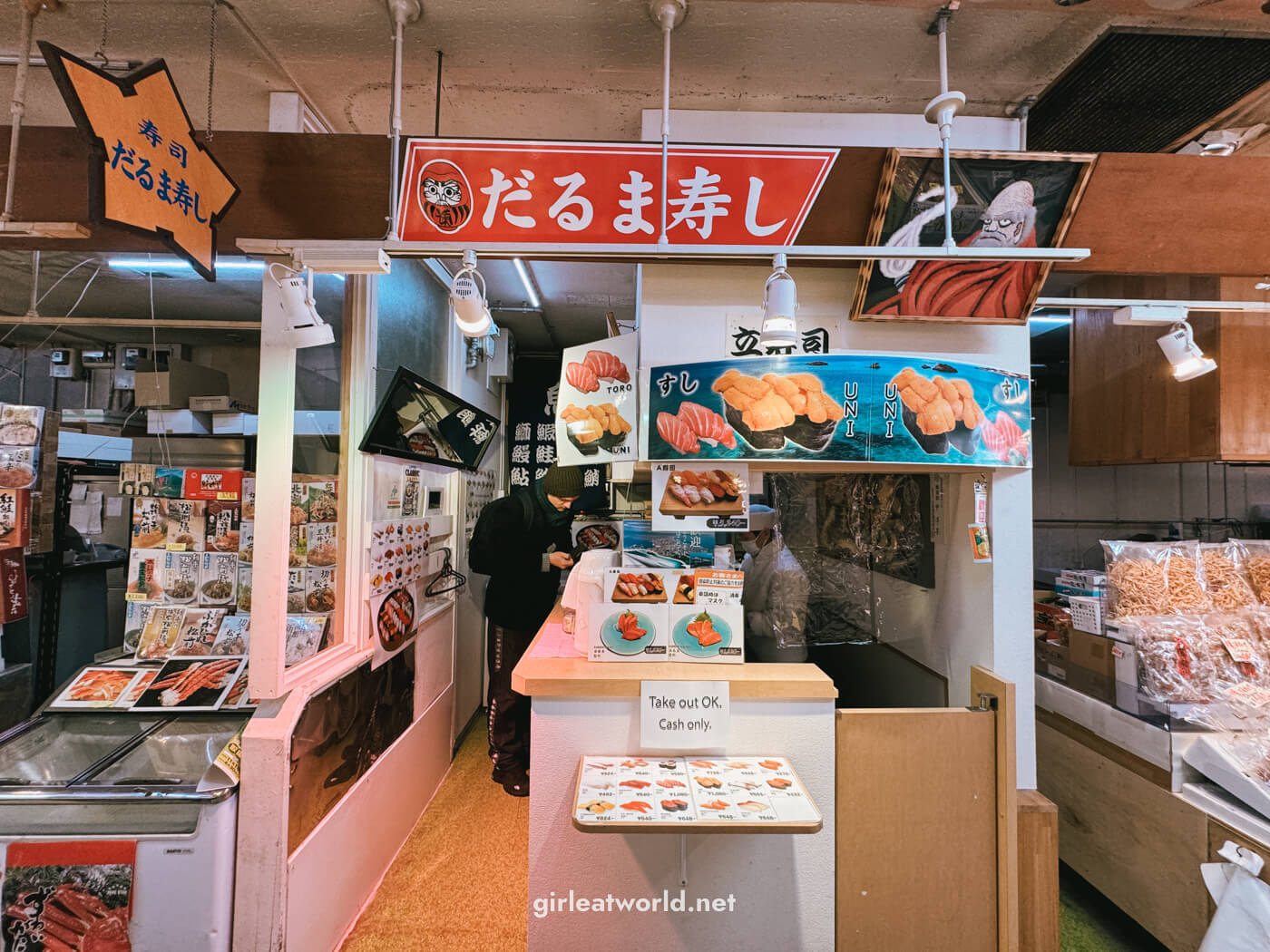

Where to eat at Ekini Morning Market
- Daruma Sushi at Ekini Market
- Hakodate Uni Murakami
- Chamu Seafood Restaurant at Donburi Yokocho
- Ikura-tei at Donburi Yokocho
3. Lucky Pierrot Burger
Lucky Pierrot is Hakodate’s famous fast food chain. Each of their branches has a unique retro vibe with a different theme. Their most popular dish is the Chinese Chicken Burger and the Lucky beef burgers. Aside from the burgers they also have local Japanese food such as curry rice or rice bowls.
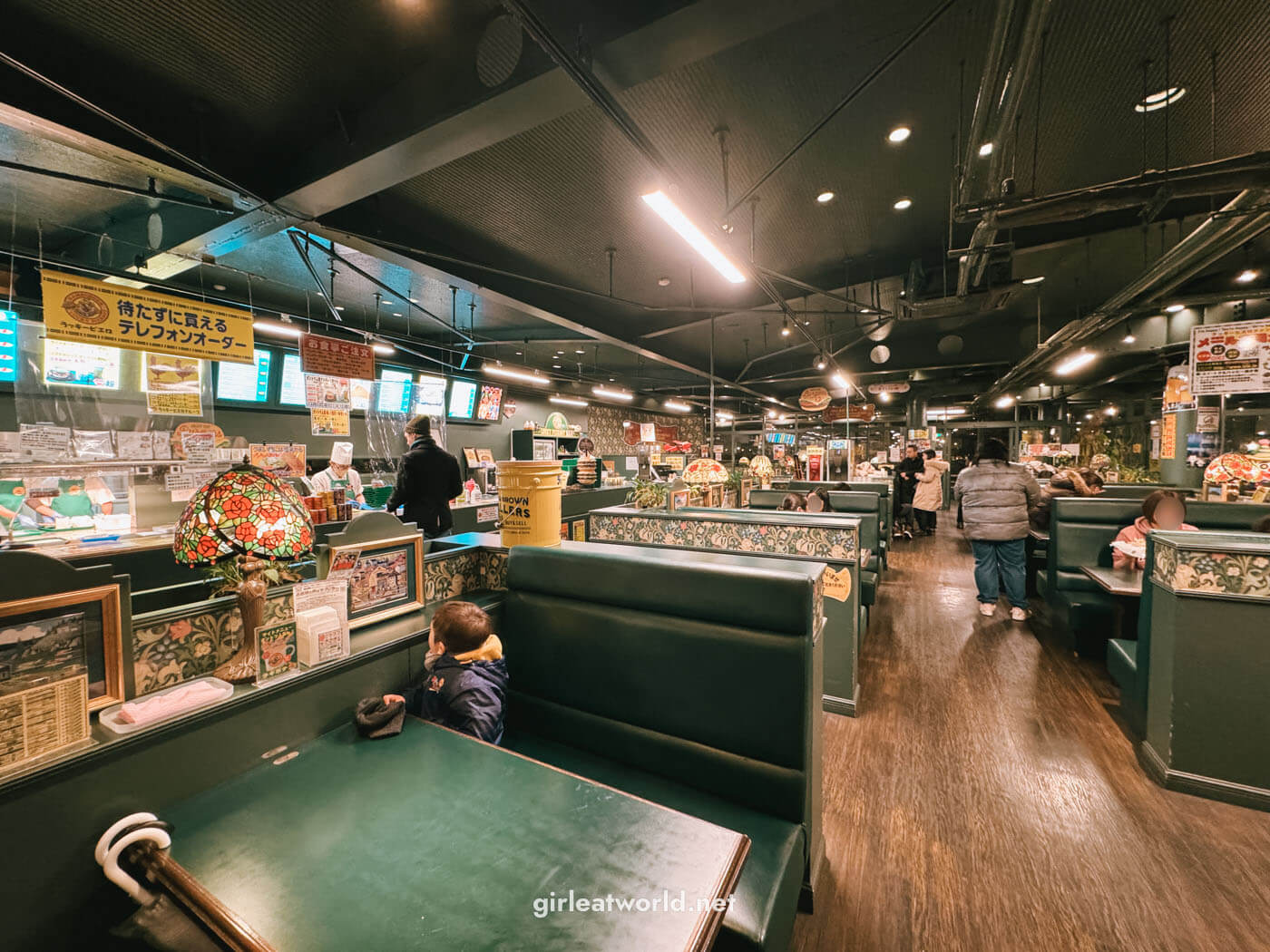
But if you ask me, I would give it a skip. I find the food to be below average. I tried the chicken burger and the lucky cheeseburger and I was very disappointed, especially when there are so many other good foods you can have in Hakodate.
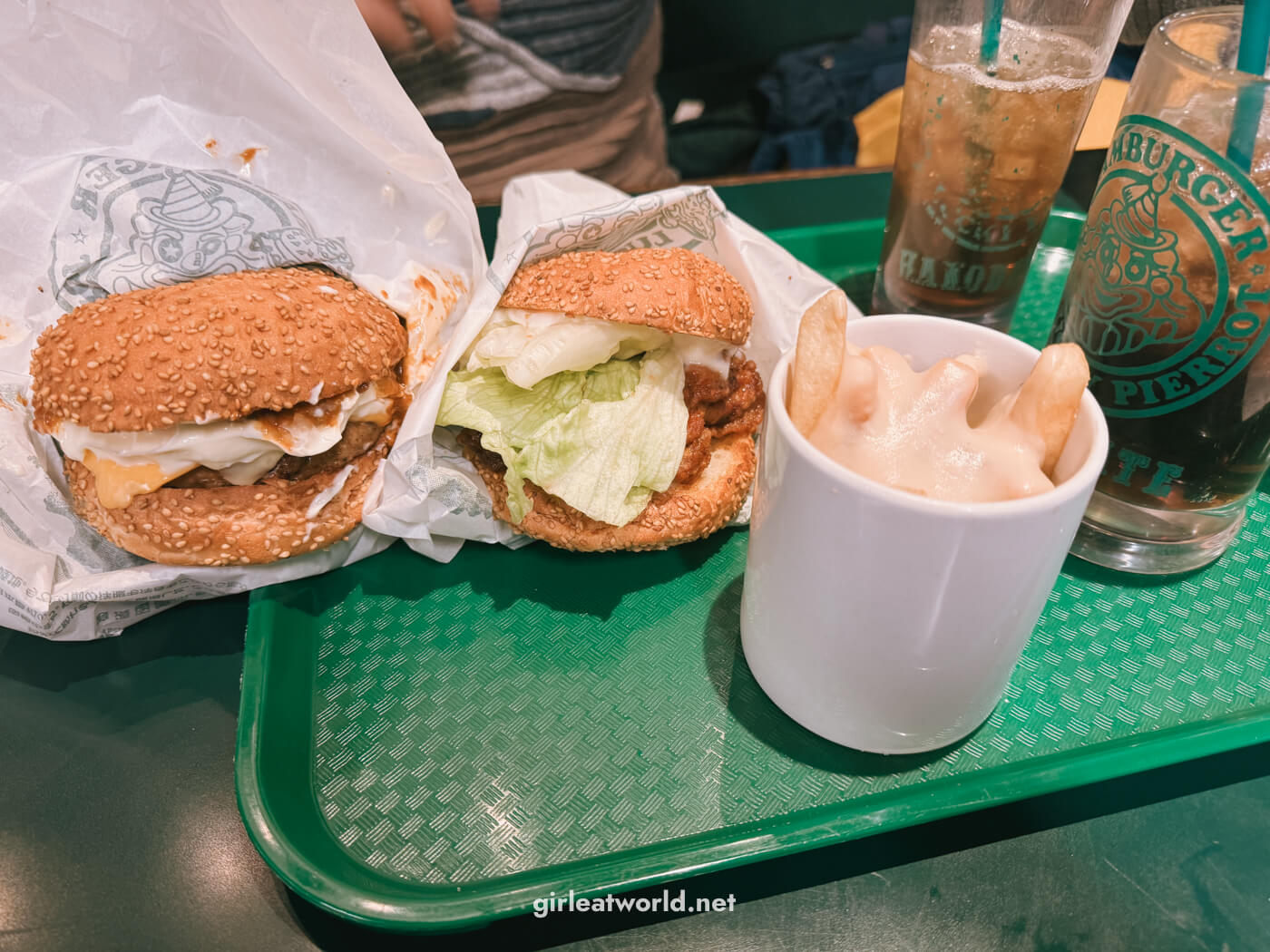
However, you could still visit one of their branches and take photos. I do think they have a very unique concept for their stores that reminded me of the retro diners by the pier at Santa Monica Pier in Los Angeles.
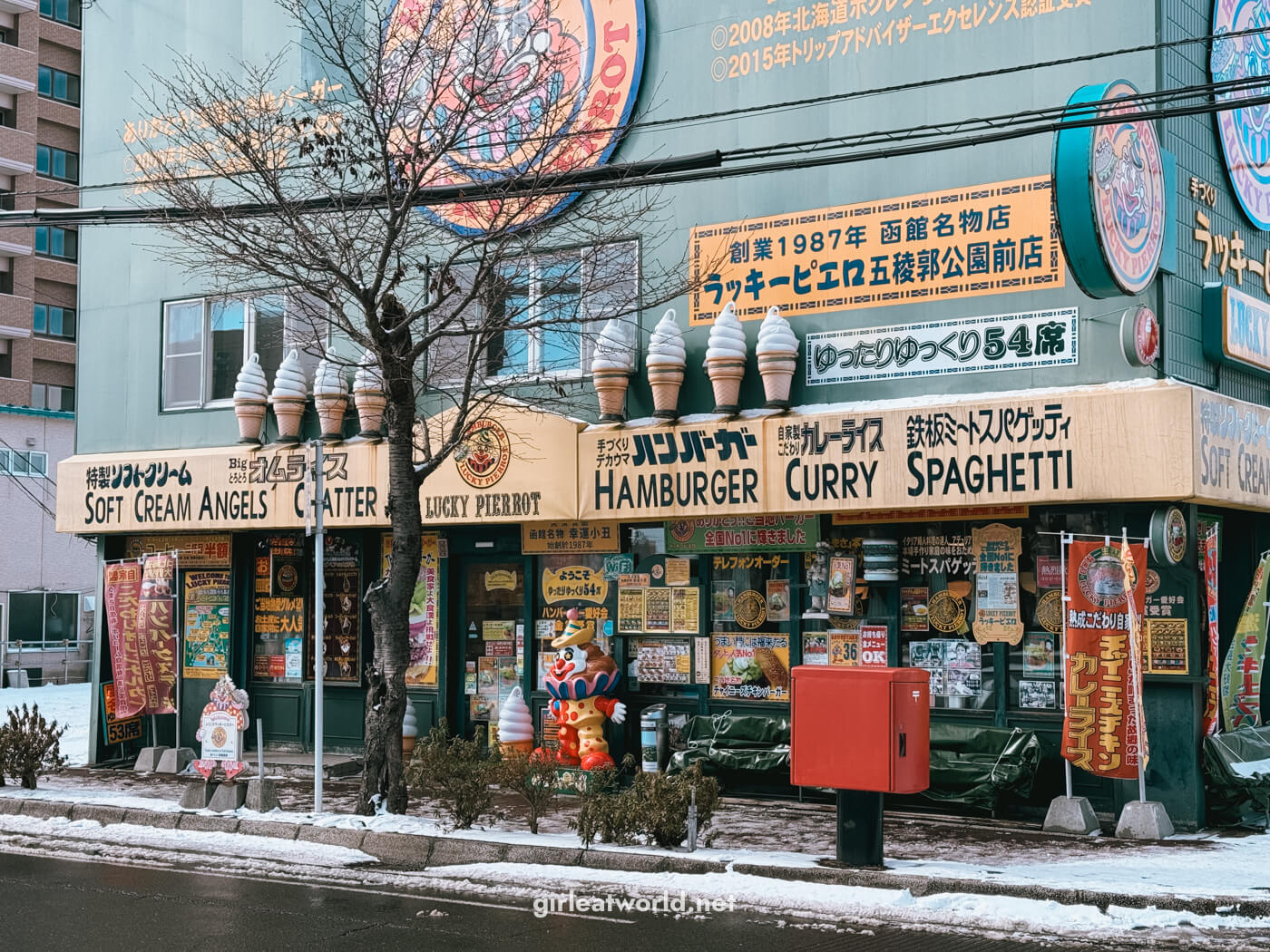
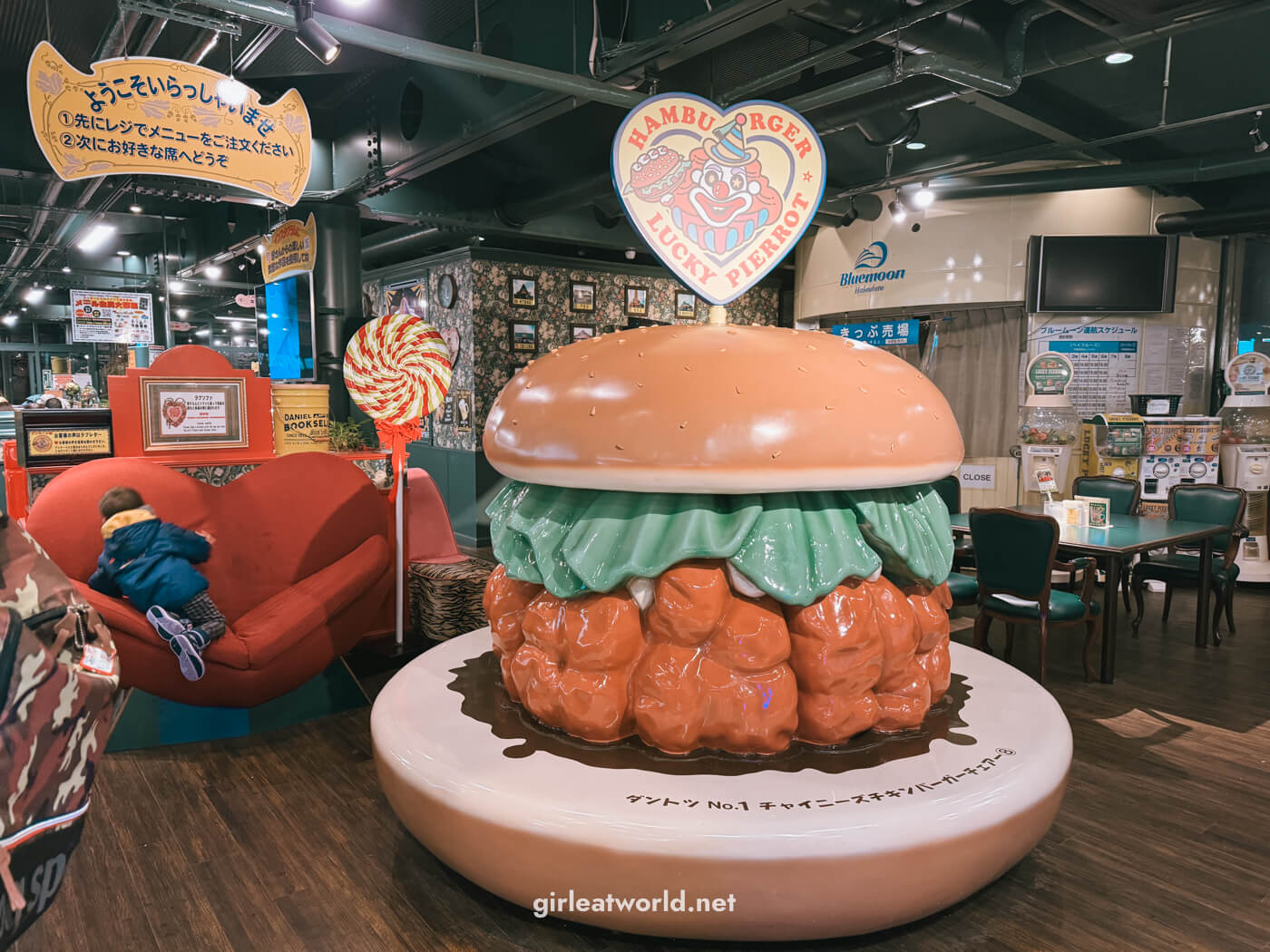
4. Wagyu Sukiyaki at Asari Honten
My friend Sam recommended Asari Honten to us. When we first arrived in Hakodate, we wanted to have dinner here but they were already fully booked. We tried our luck and managed to get a reservation for 5:30 PM early dinner the next day. So, lesson learned – book ahead if you want to come here!

The menu at Asari Honten is not extensive. They only serve sukiyaki of various wagyu cuts, from grade A4 to A5. The cost of the dinner sets ranges from 3,500 to 5,000 yen, and only for 100 grams of meat, so it is not exactly a cheap or big meal. You could top up more meat if you’d like though. The dinner set comes with a range of vegetables, a choice of rice or udon, and a dessert.
What also made the meal special is that the restaurant is located in a traditional house. Each group of guests will be assigned to a private tatami dining room, so you likely won’t see other guests here. It also means you’ll be sitting on the floor, Japanese-style!
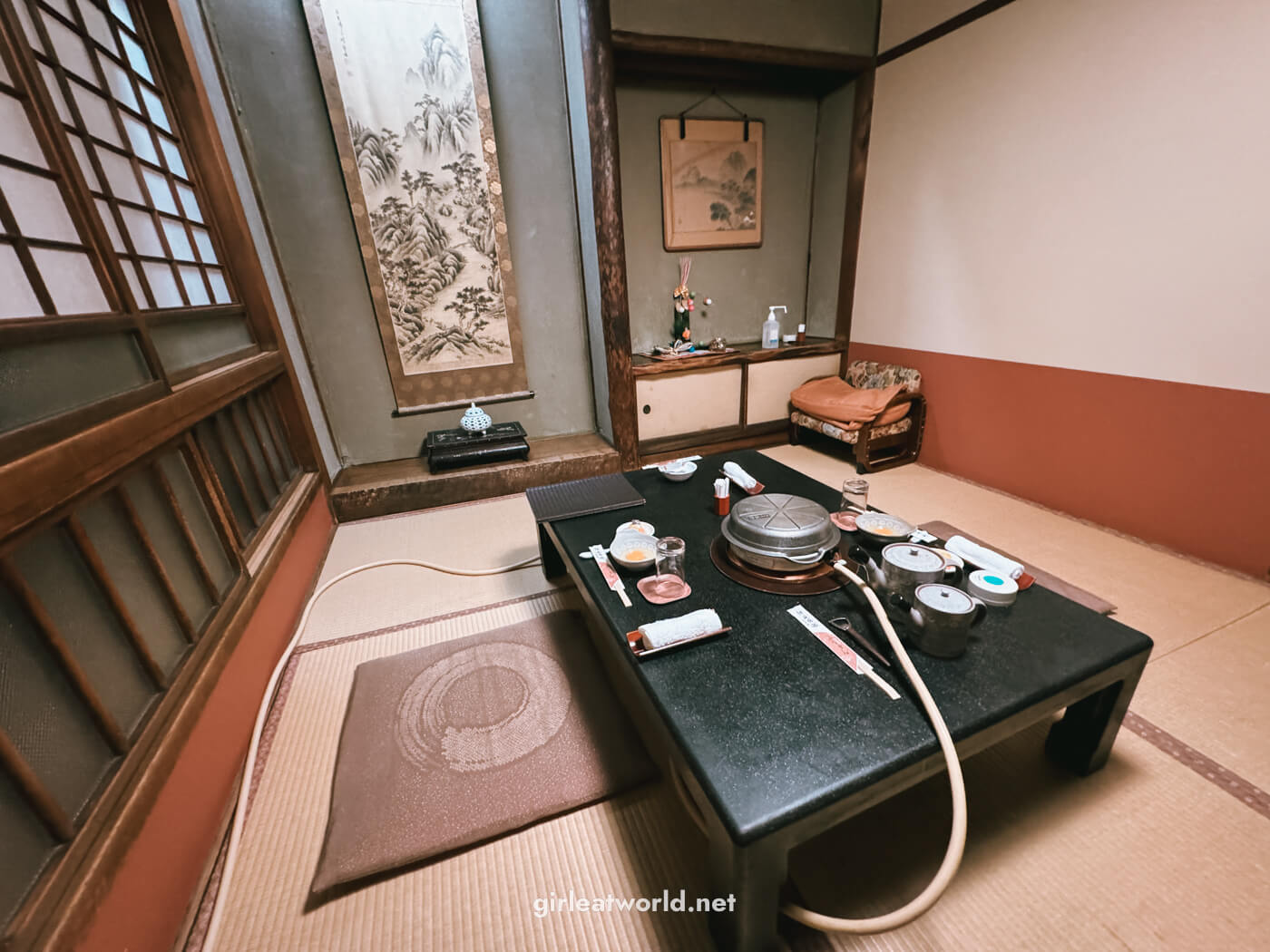
If you manage to secure a lunch appointment, they have a 1,500 yen lunch set which is more value for money!
2 Days Itinerary in Hakodate
With all the things you can do in Hakodate, here is how you can put it together into a 2-day itinerary
Day 1
- Breakfast at Morning Market
- Explore Motomachi District
- Shio Ramen for Lunch
- Shop at Kanemori Brickhouse
- Mount Hakodate Observatory
Day 2
- Goryokaku Tower
- Goryokaku Fort
- Yunokawa Onsen
- Hakodate Tropical Botanical Garden
And, that’s all I know about visiting Hakodate. Let me know in the comments if this is helpful for you, or if you have any questions.
More on Hokkaido: If you find this post useful, don’t forget to check out my other posts about Hokkaido!
See you later!
